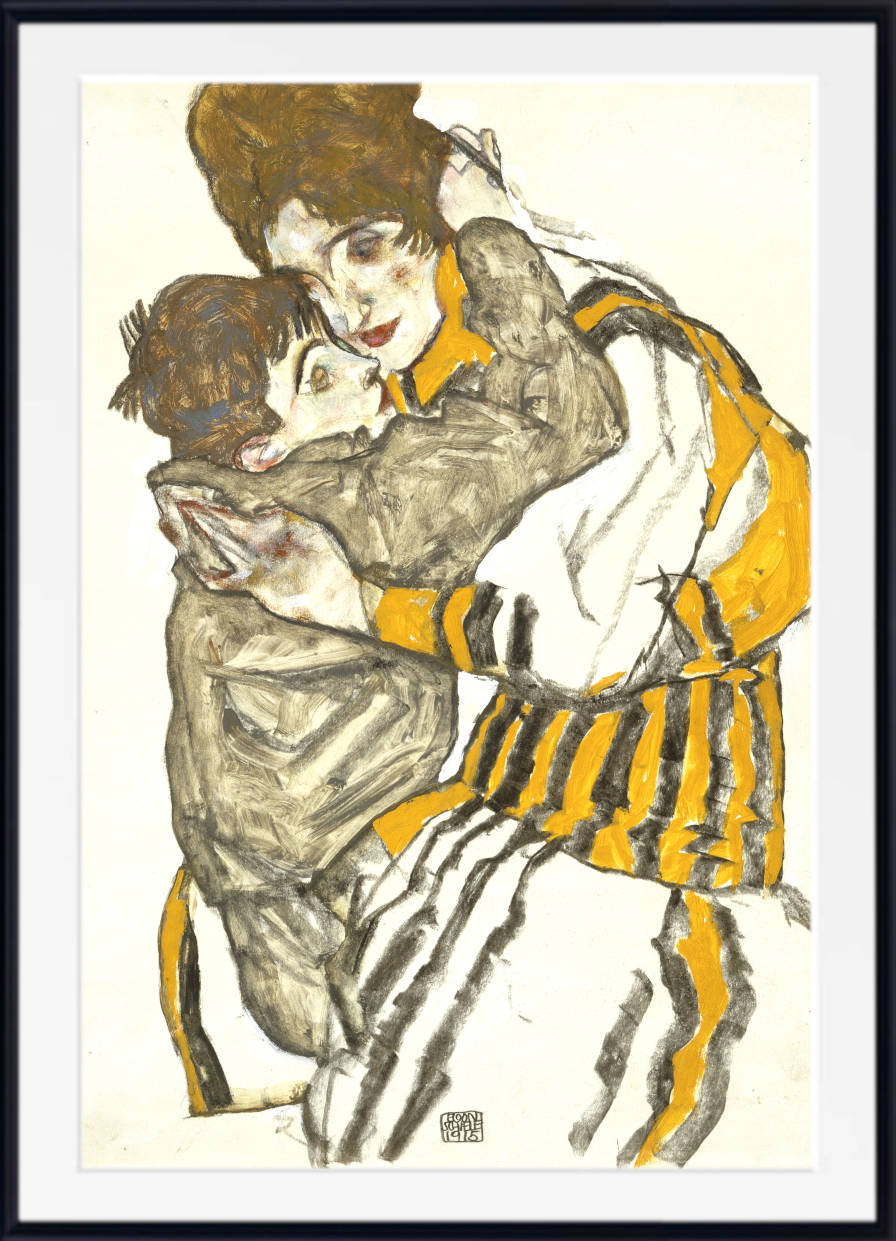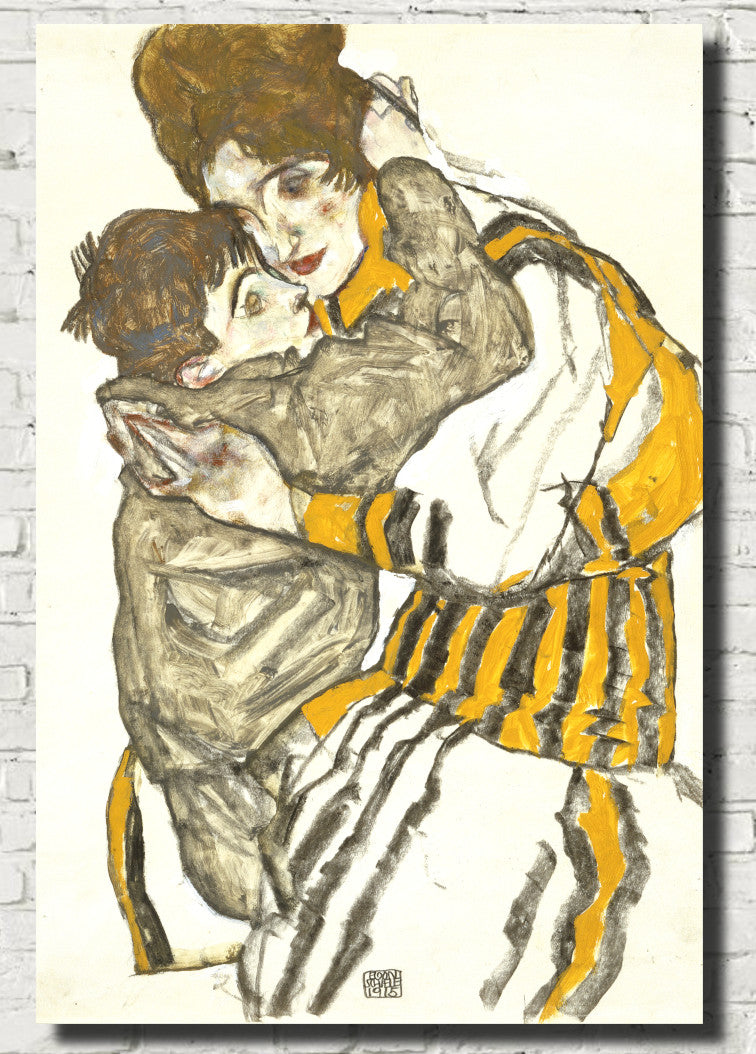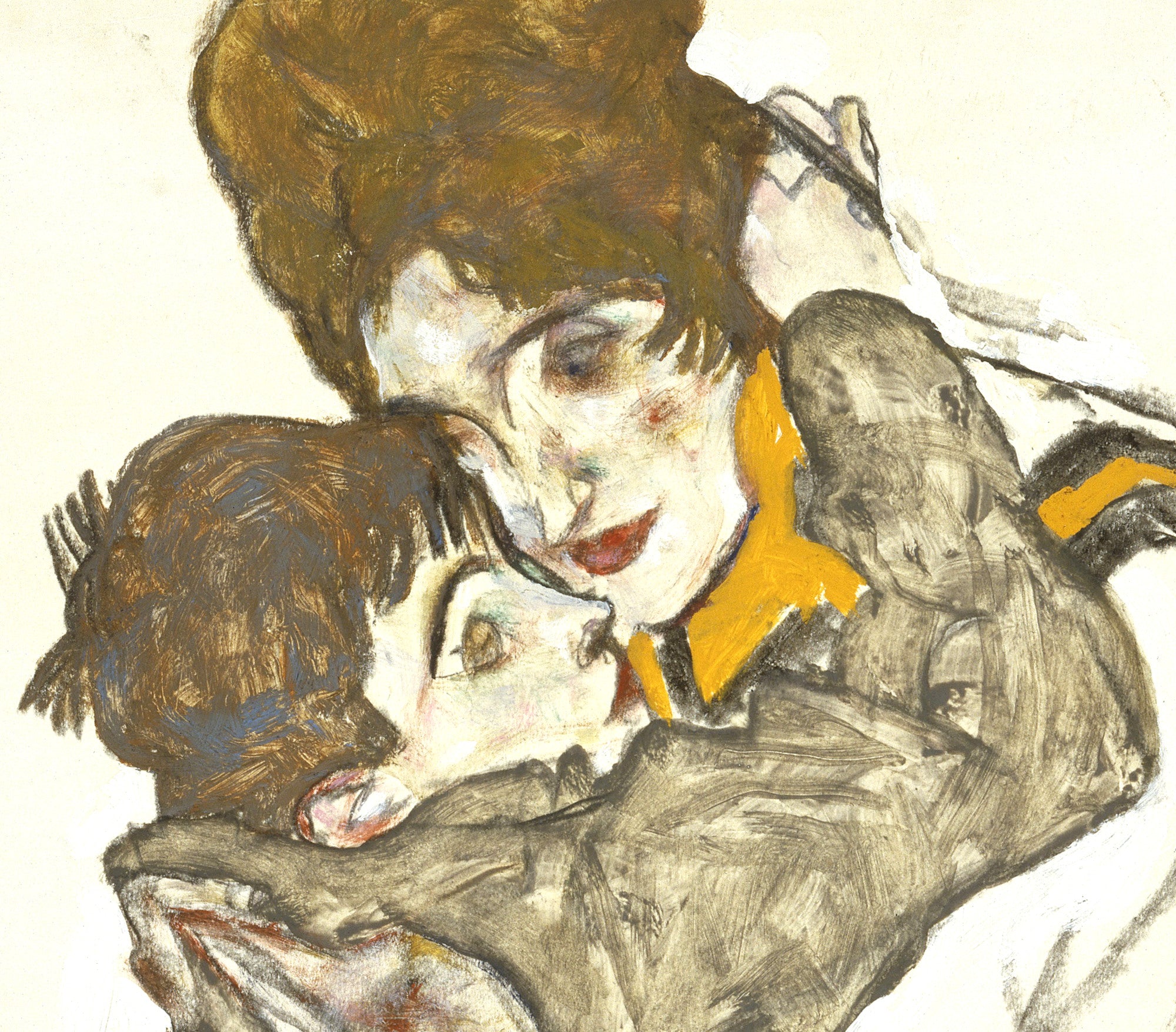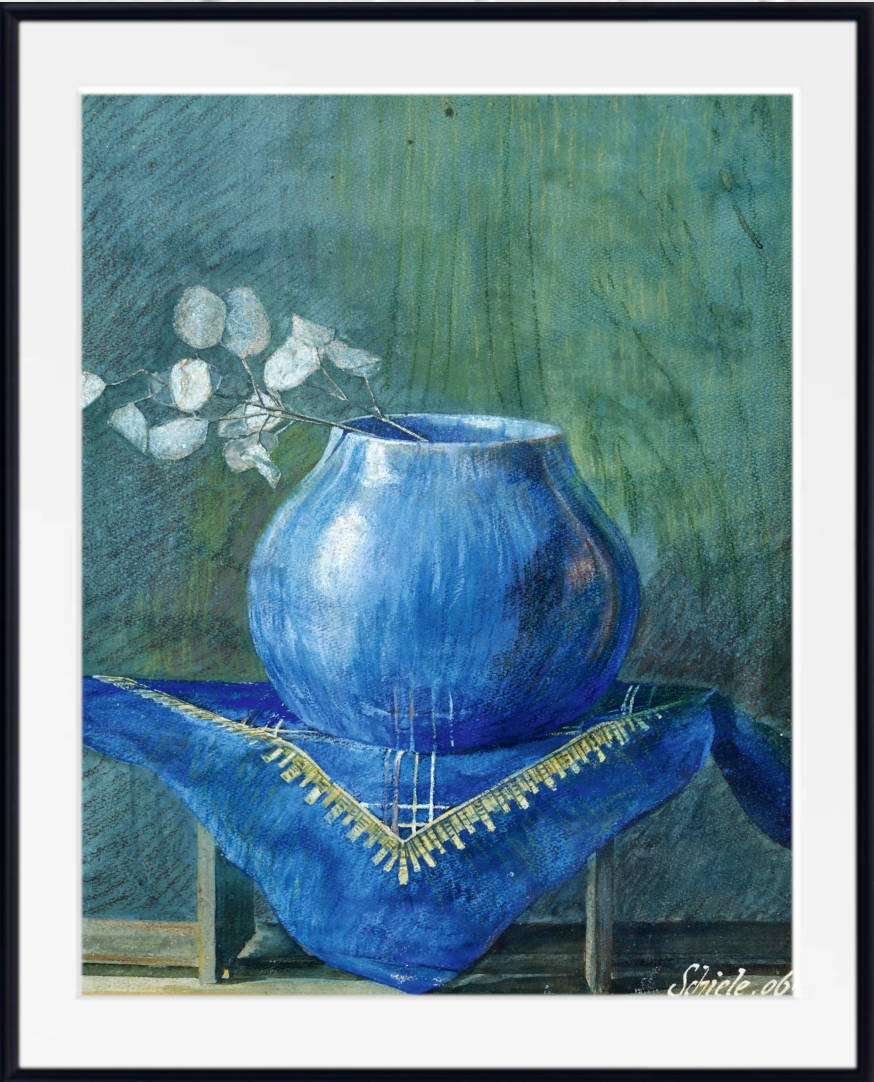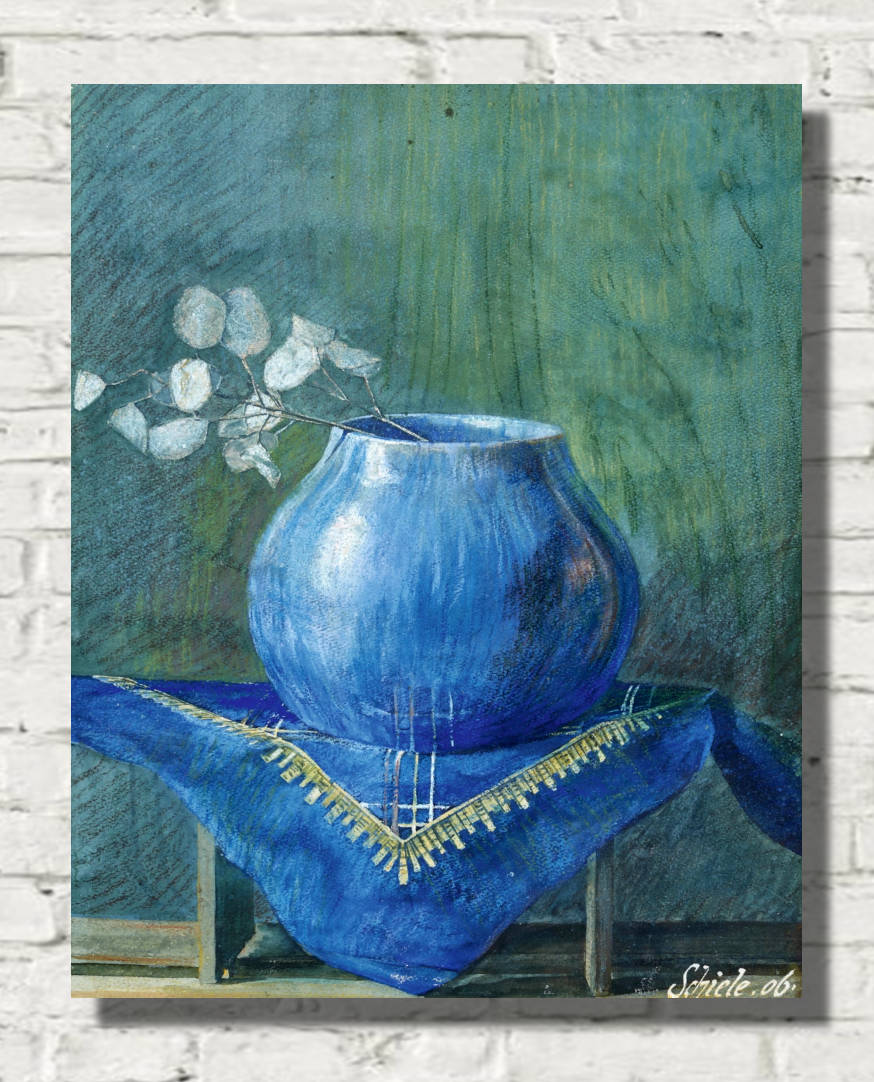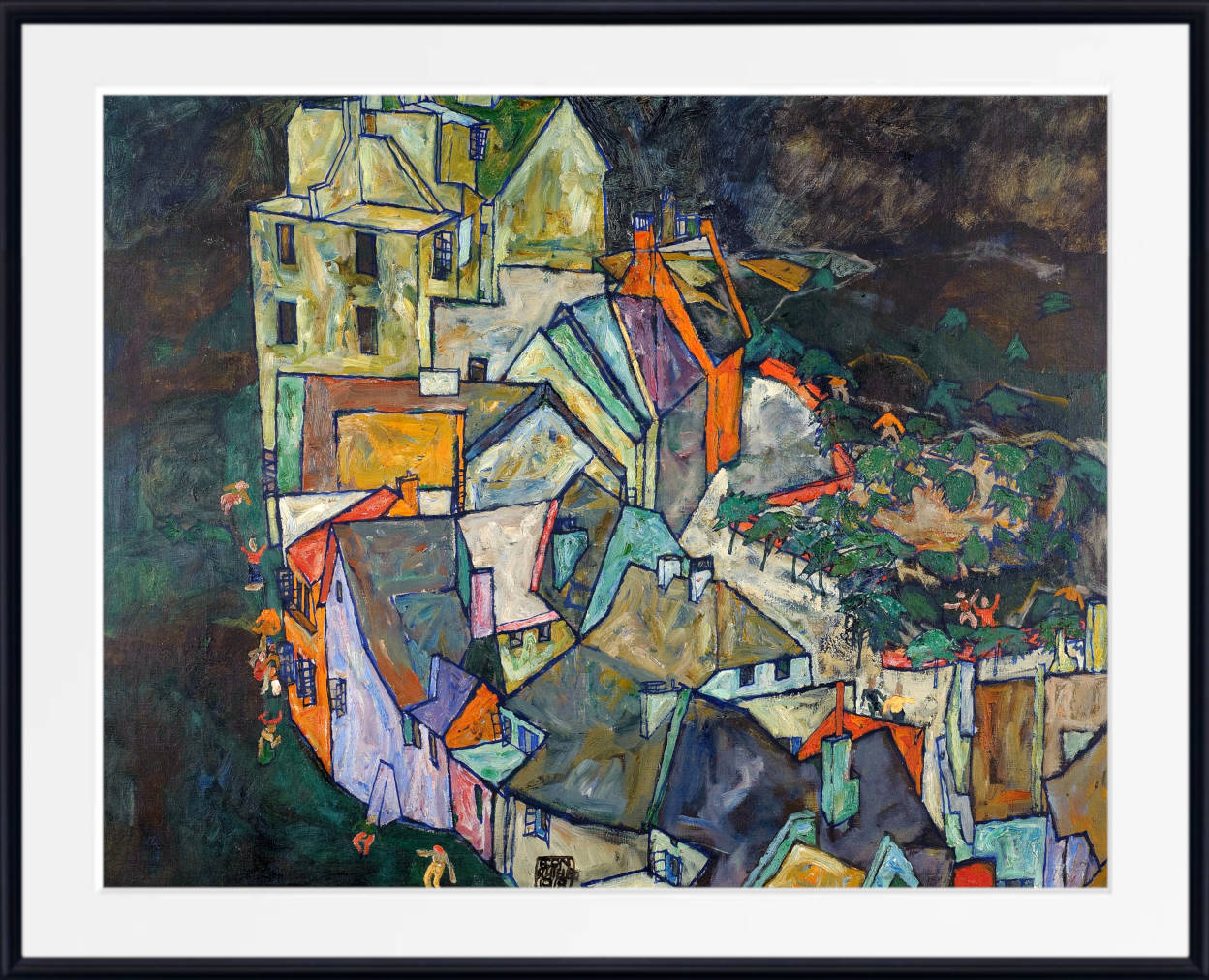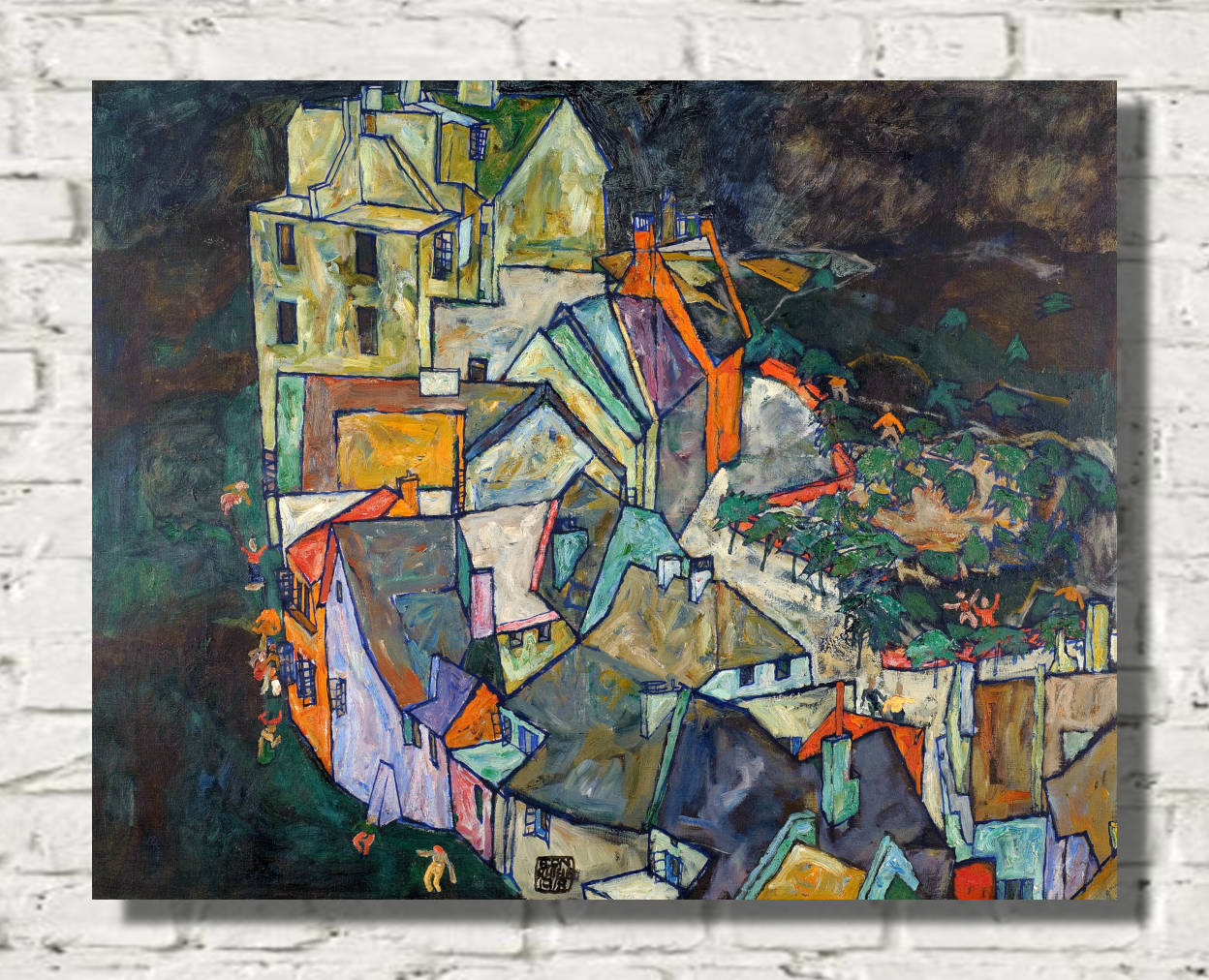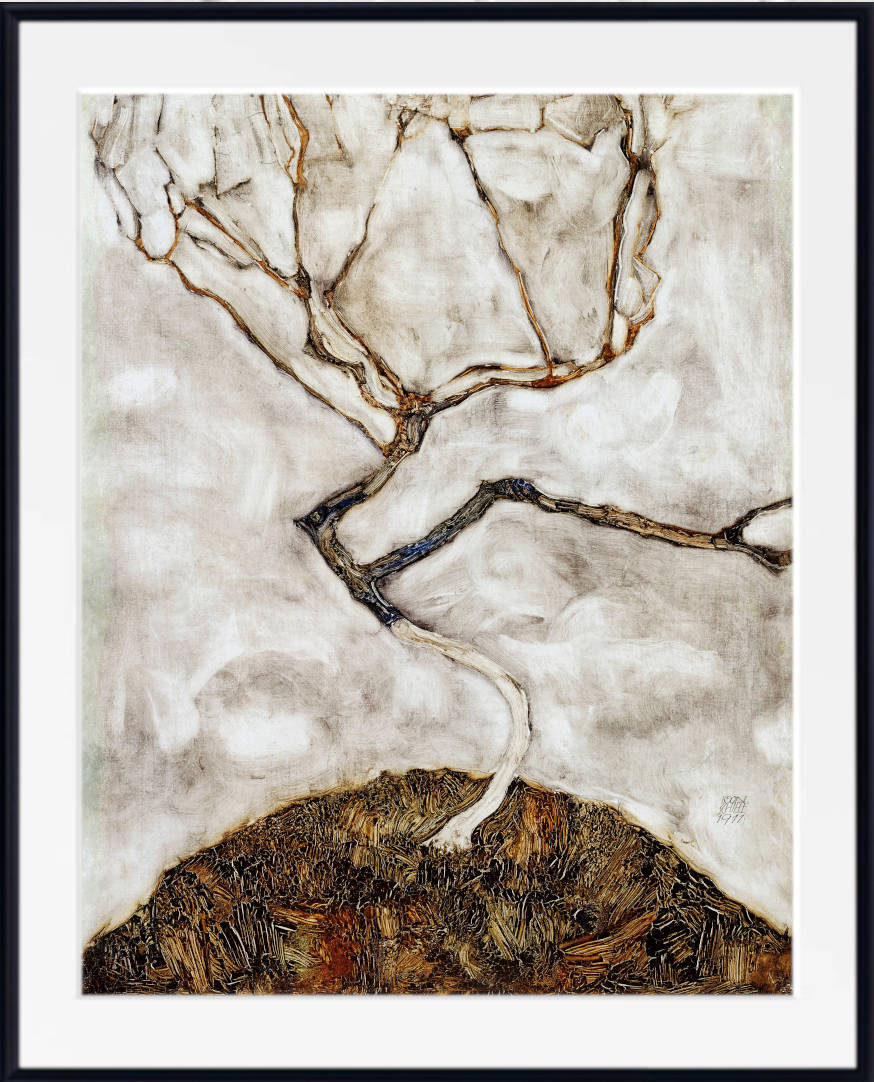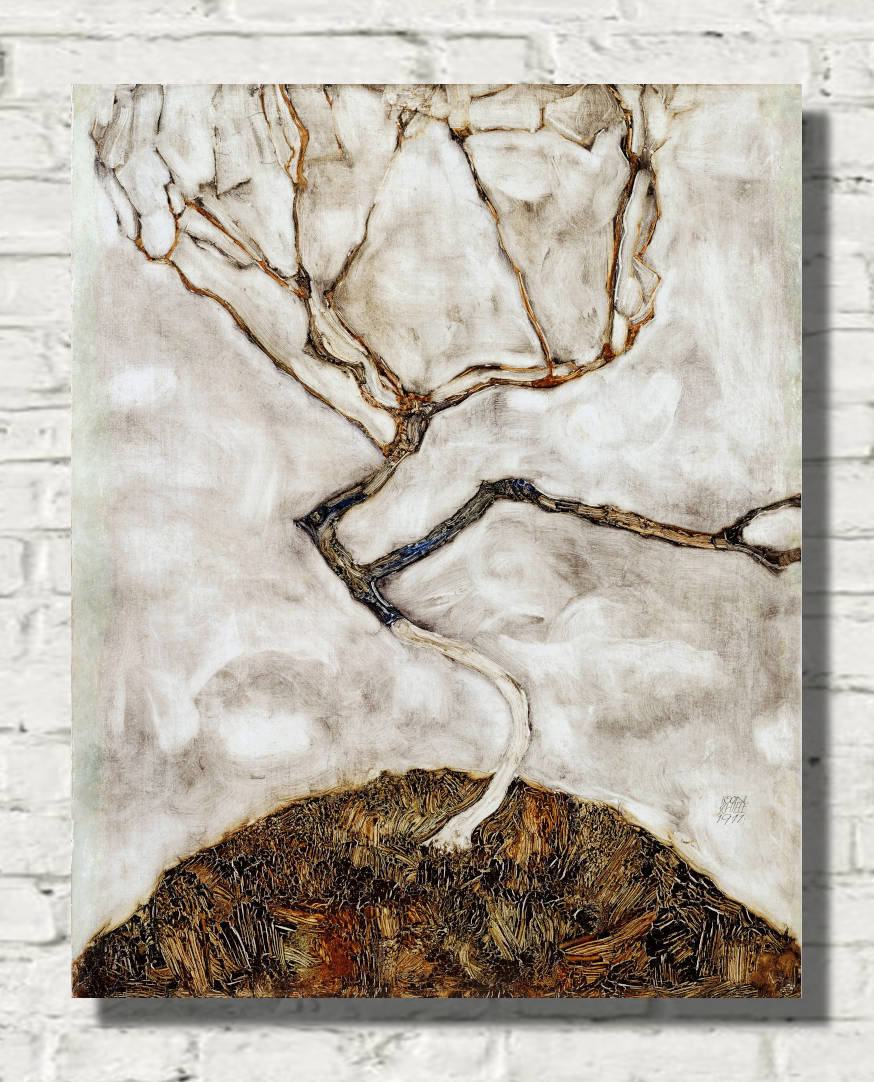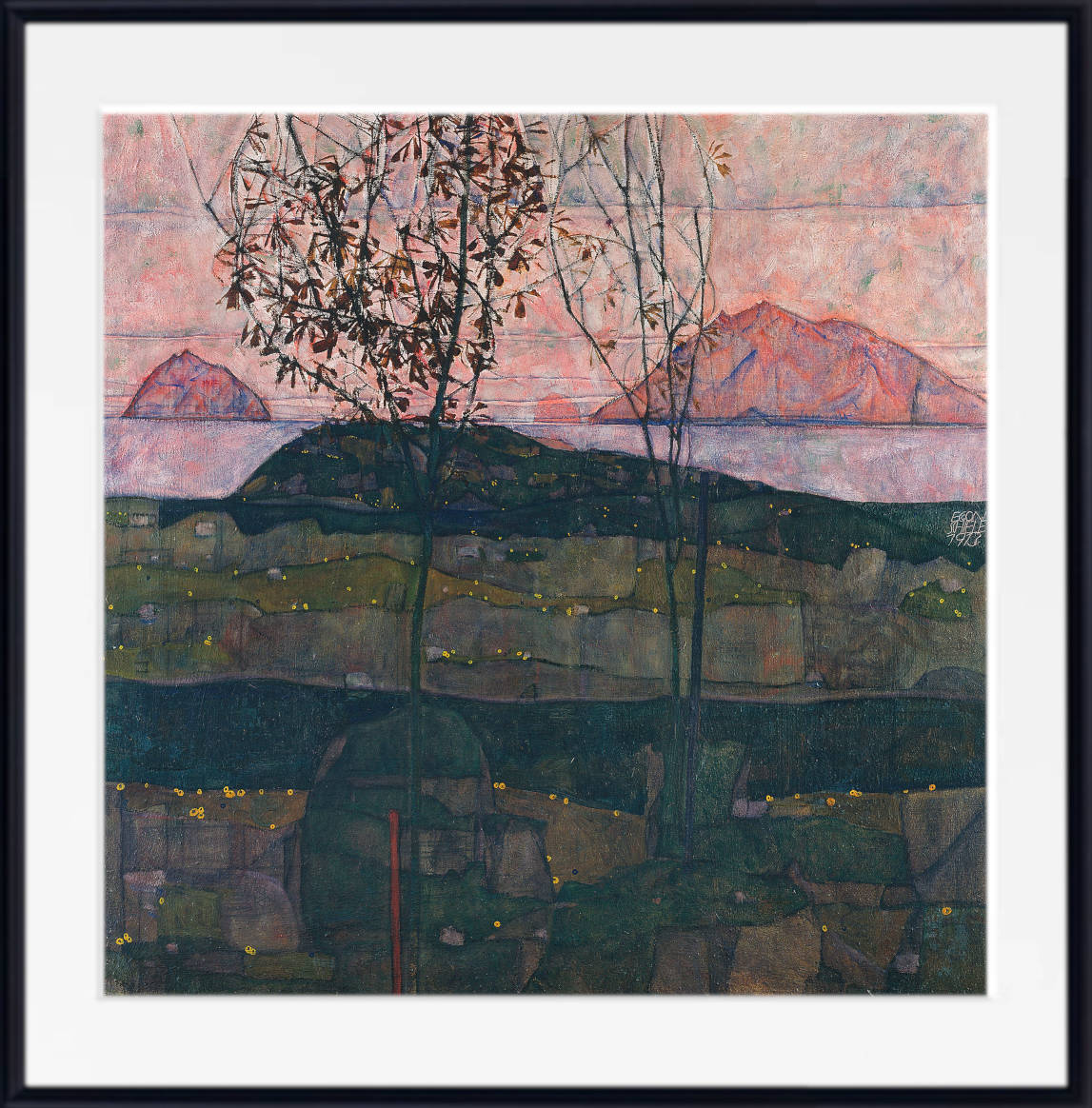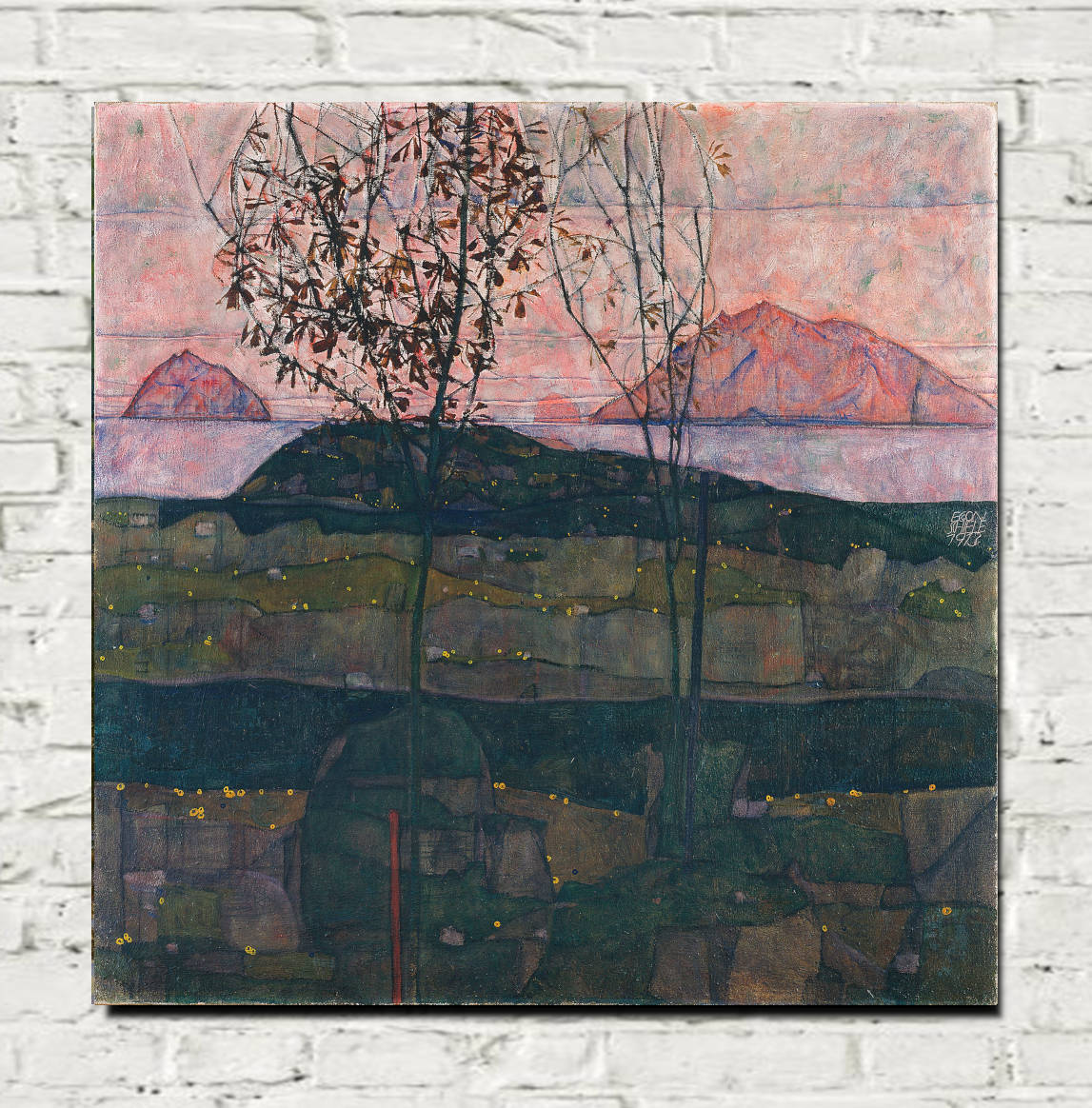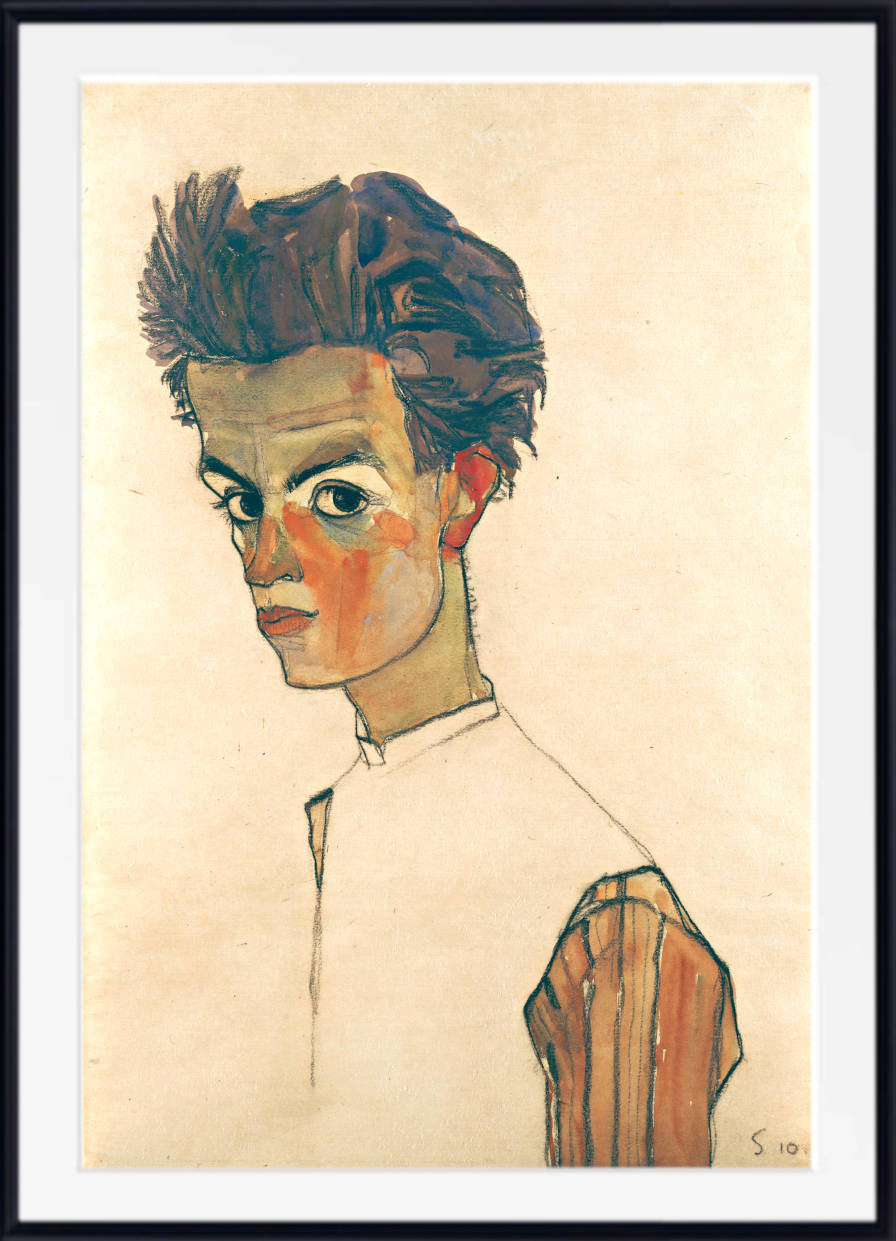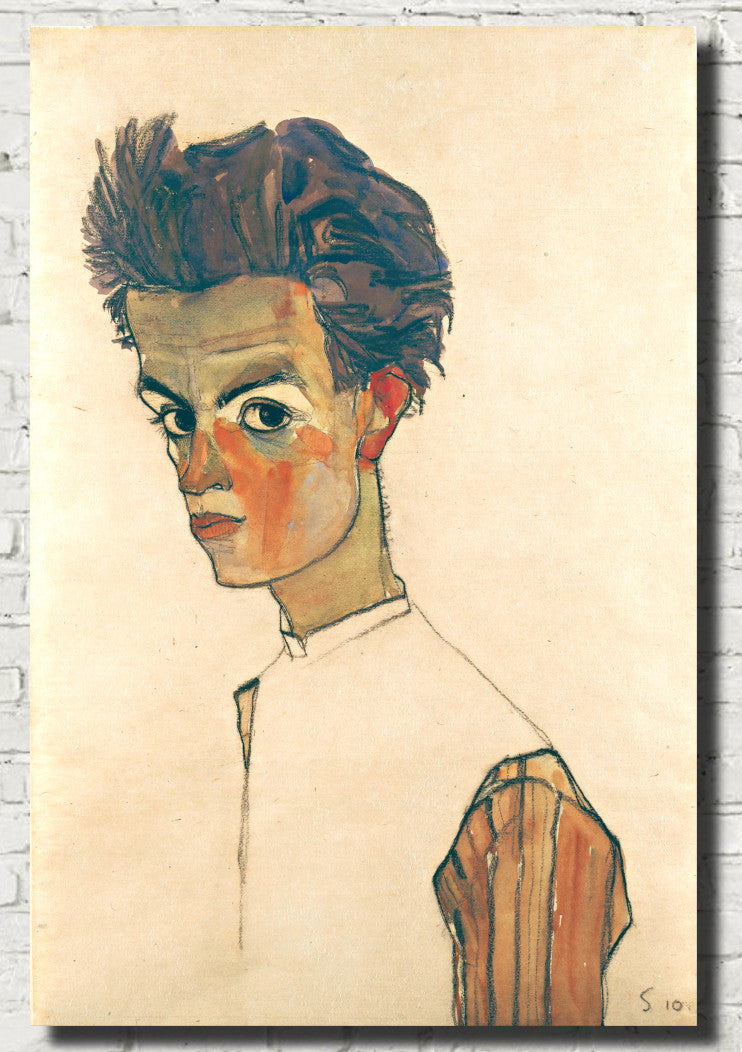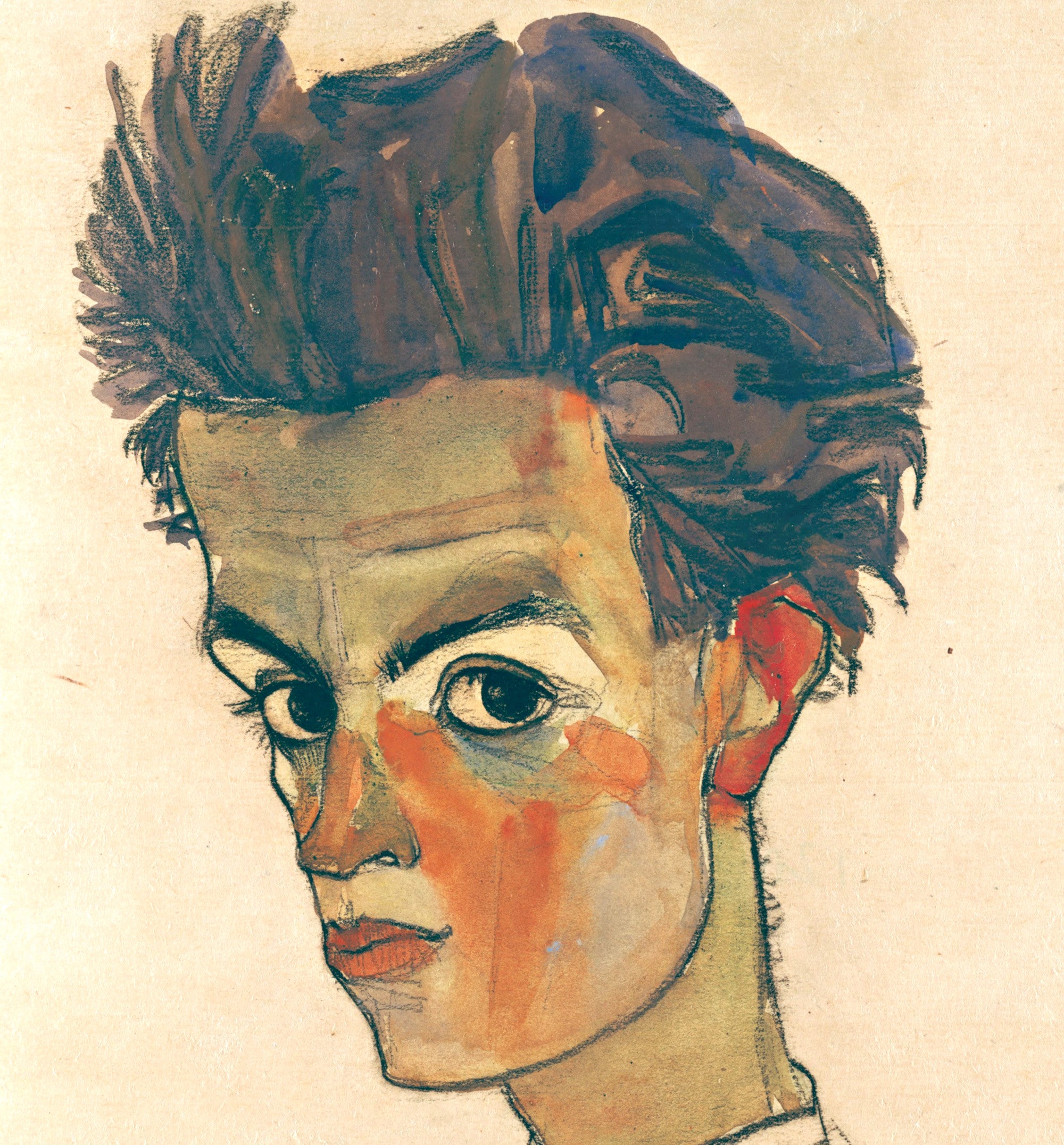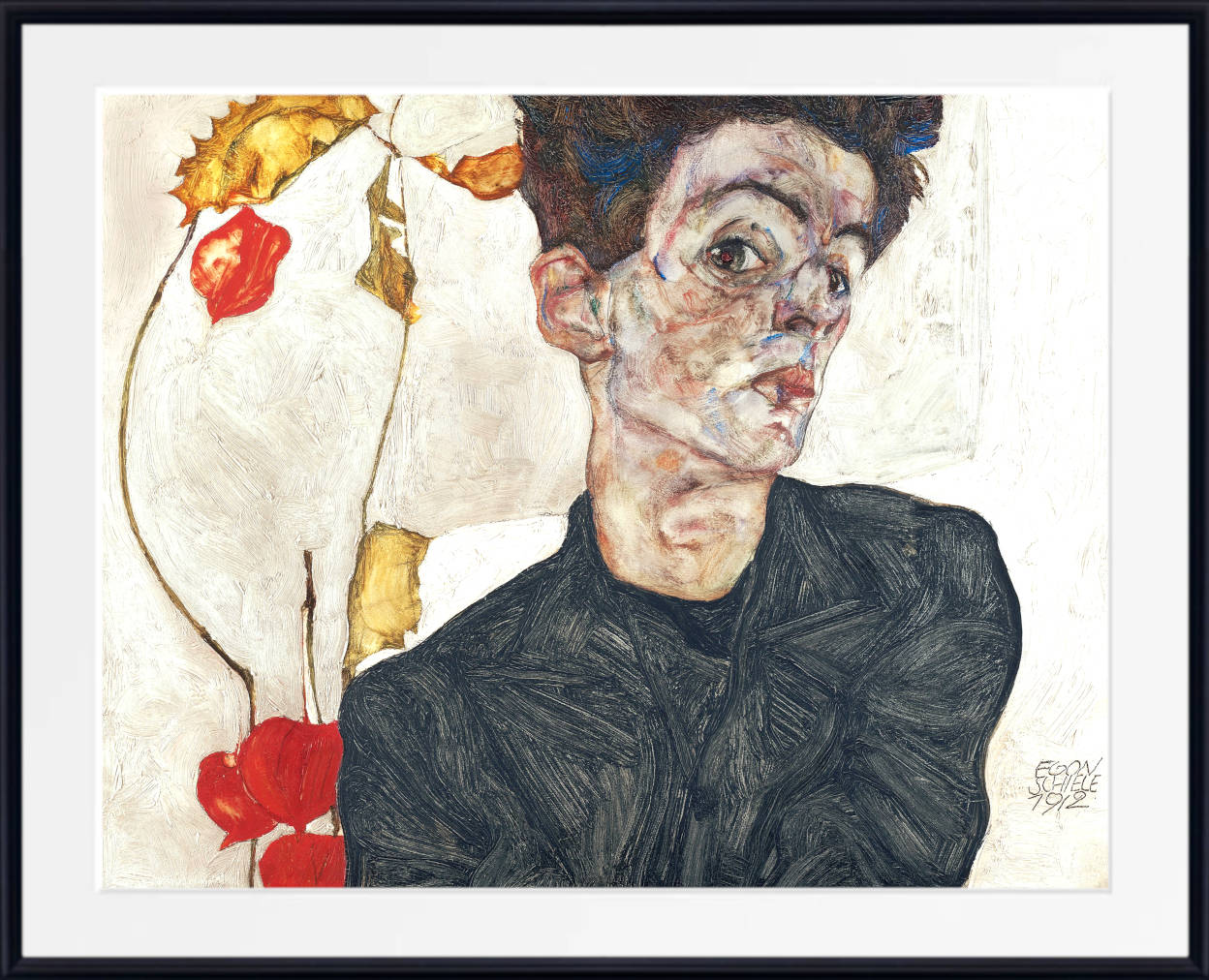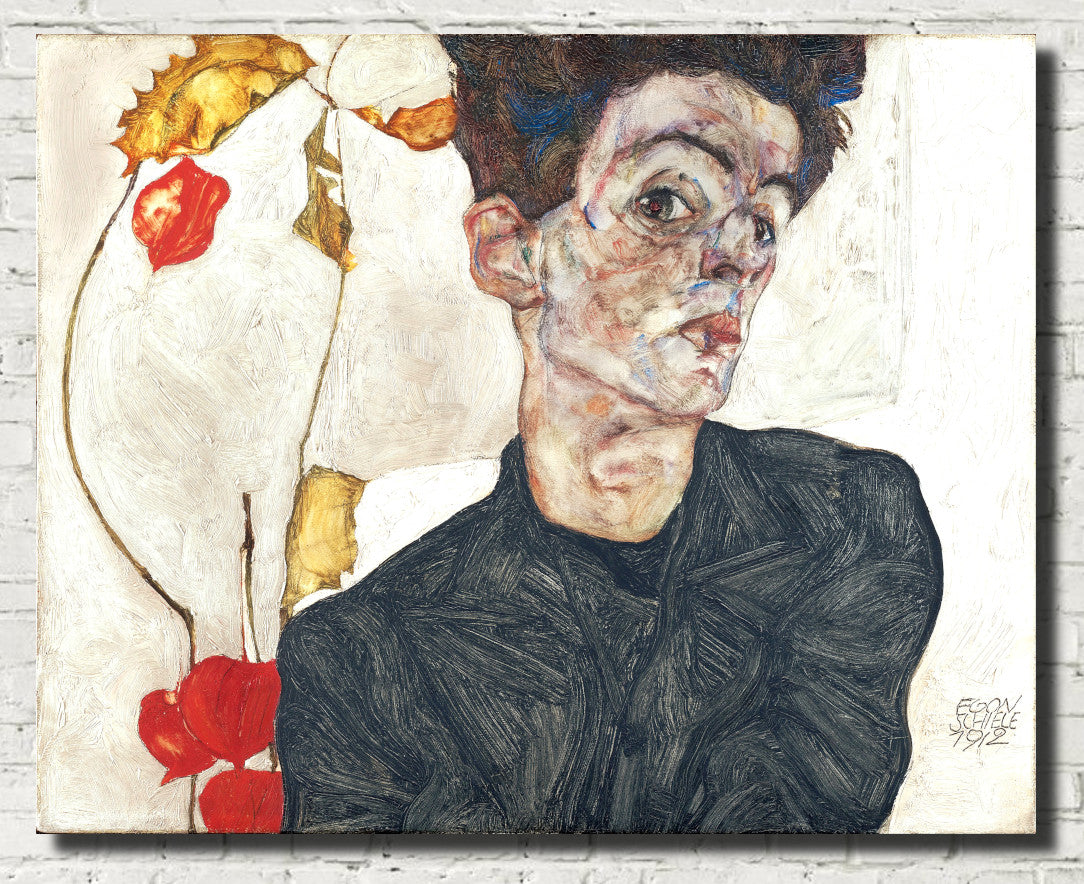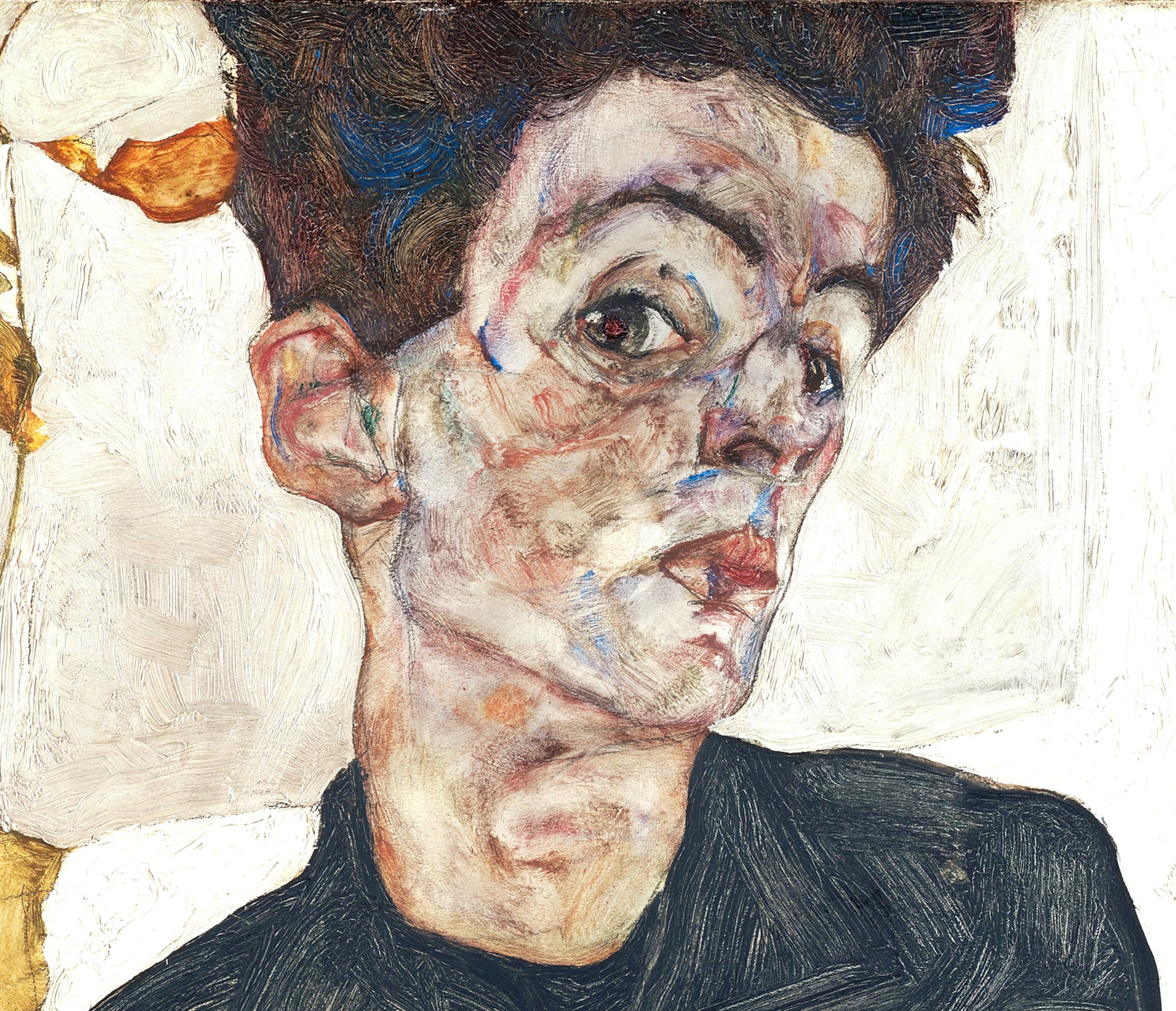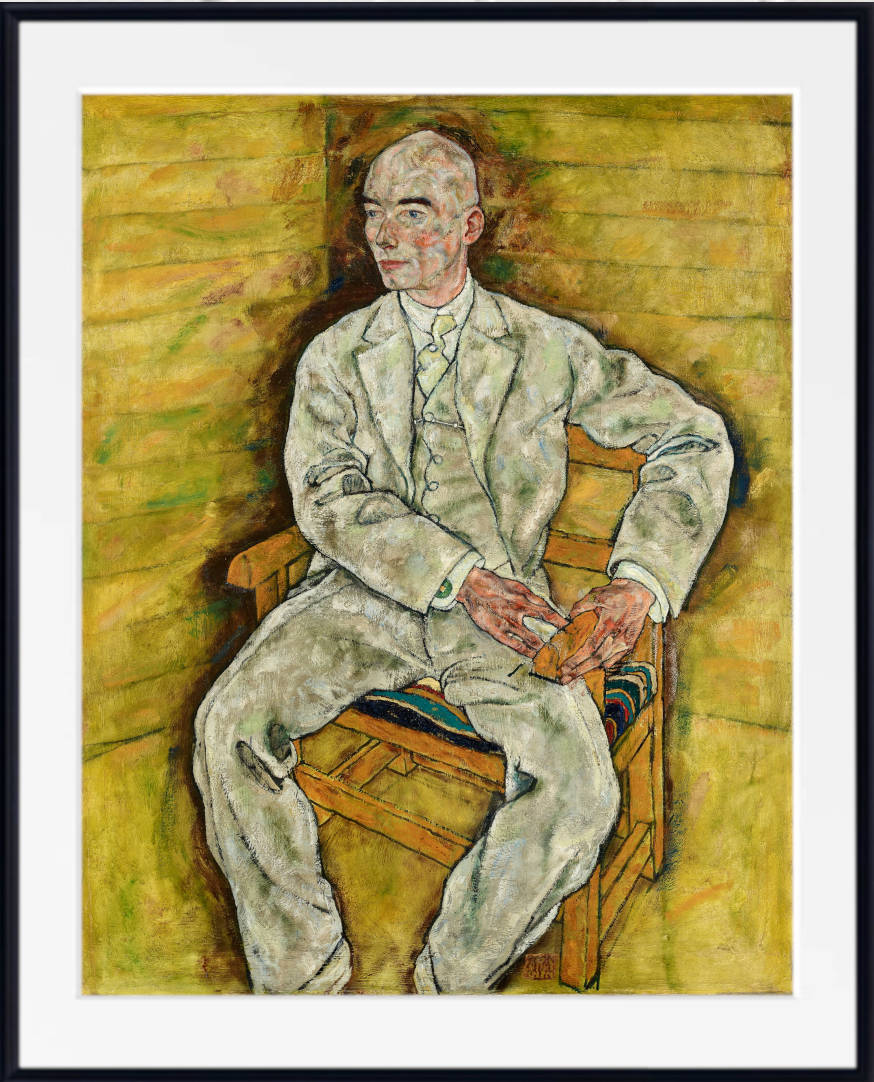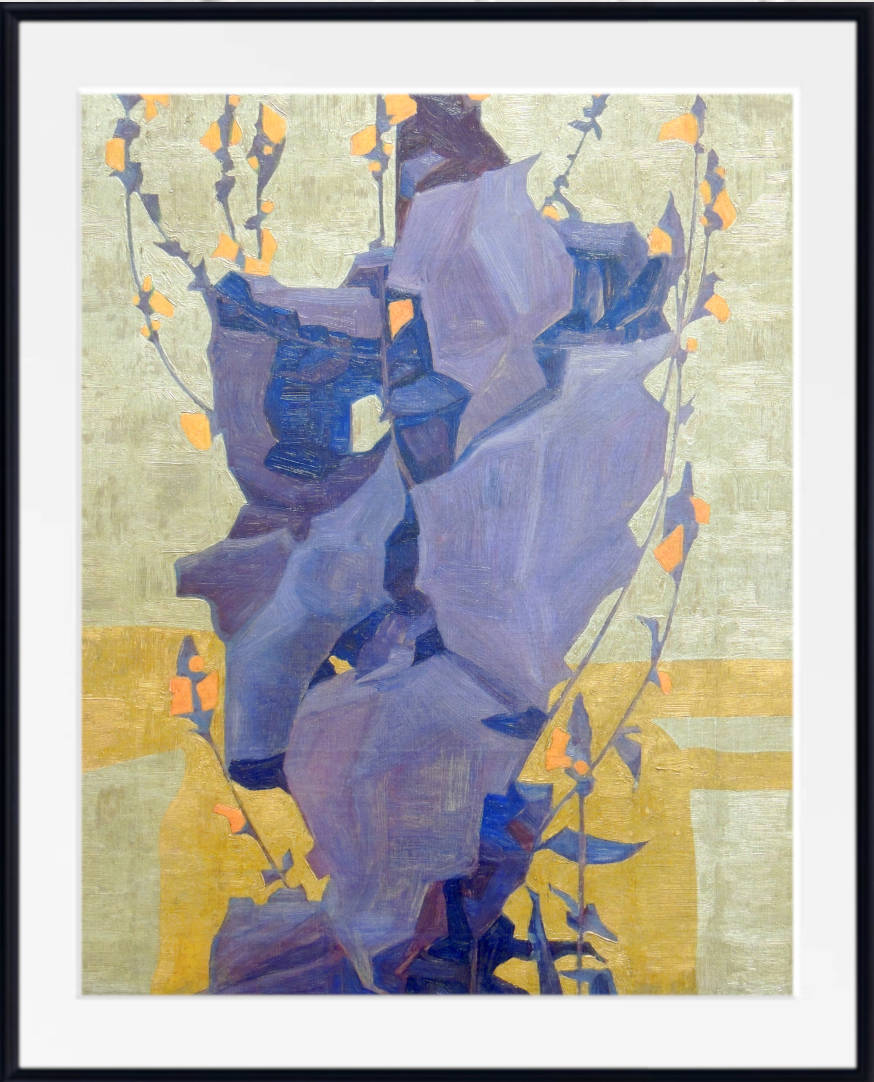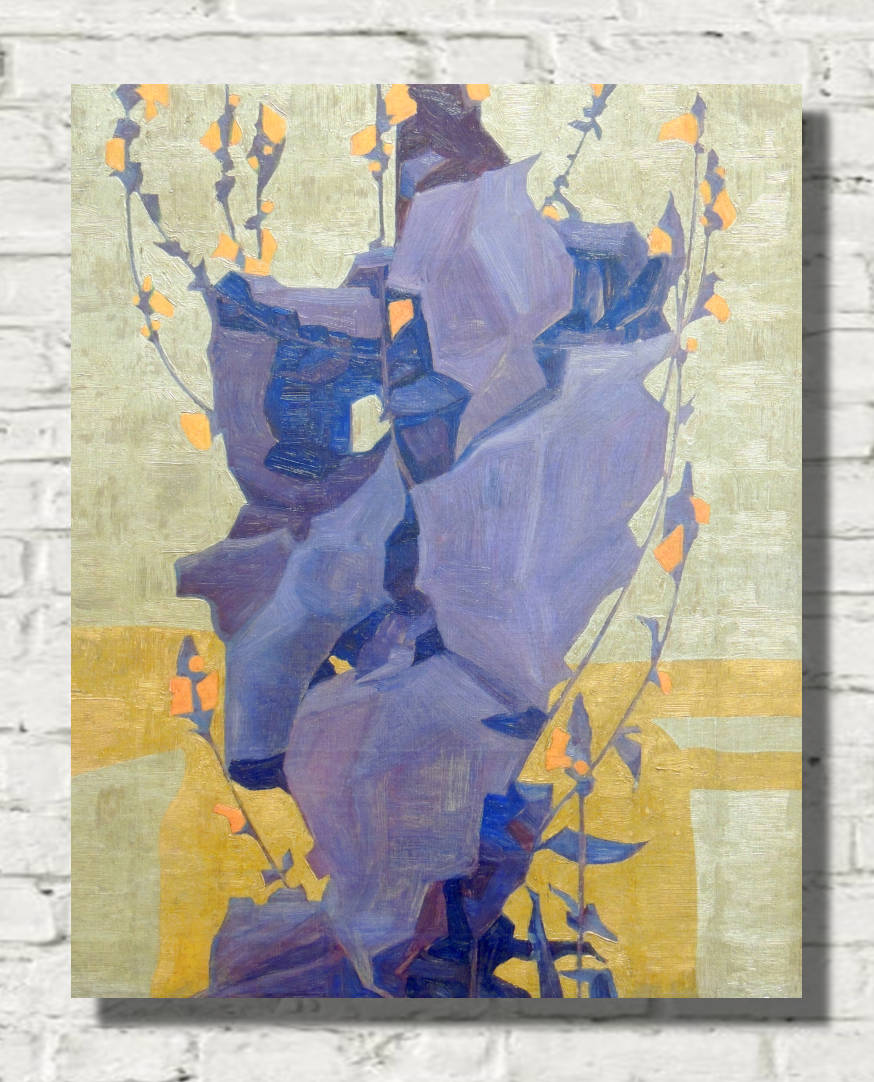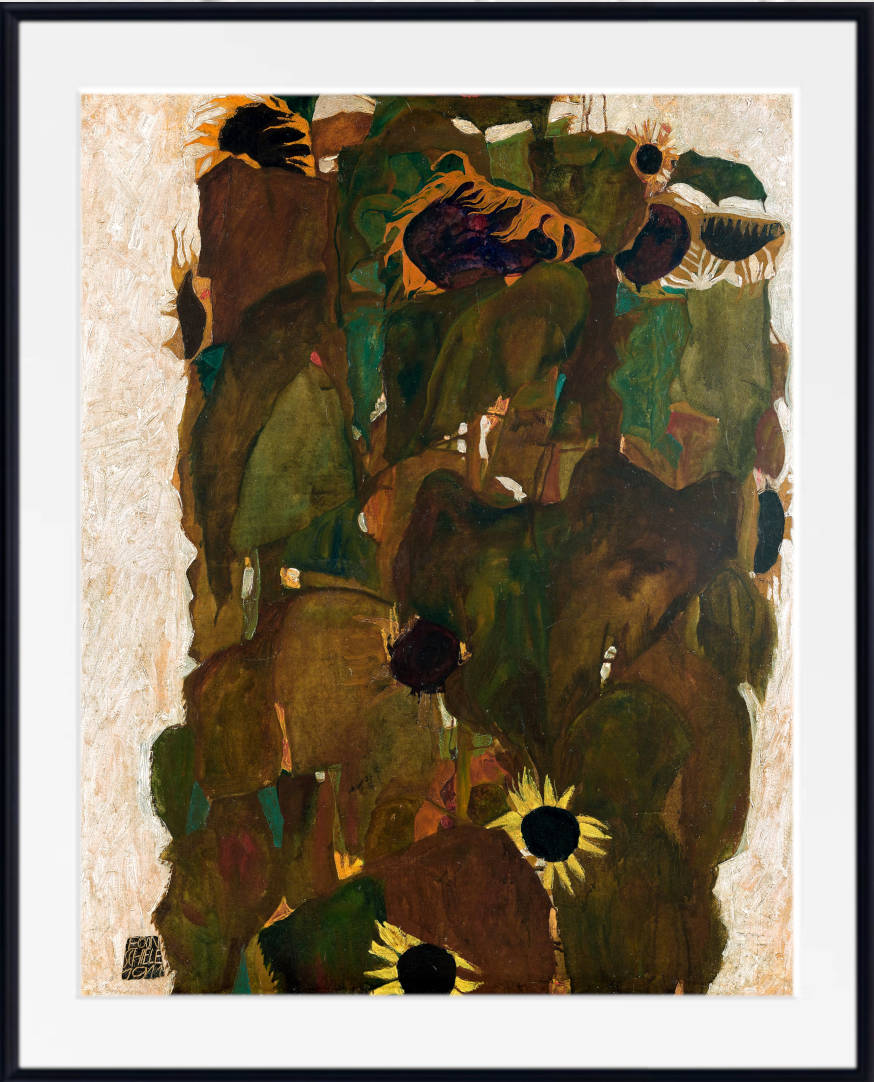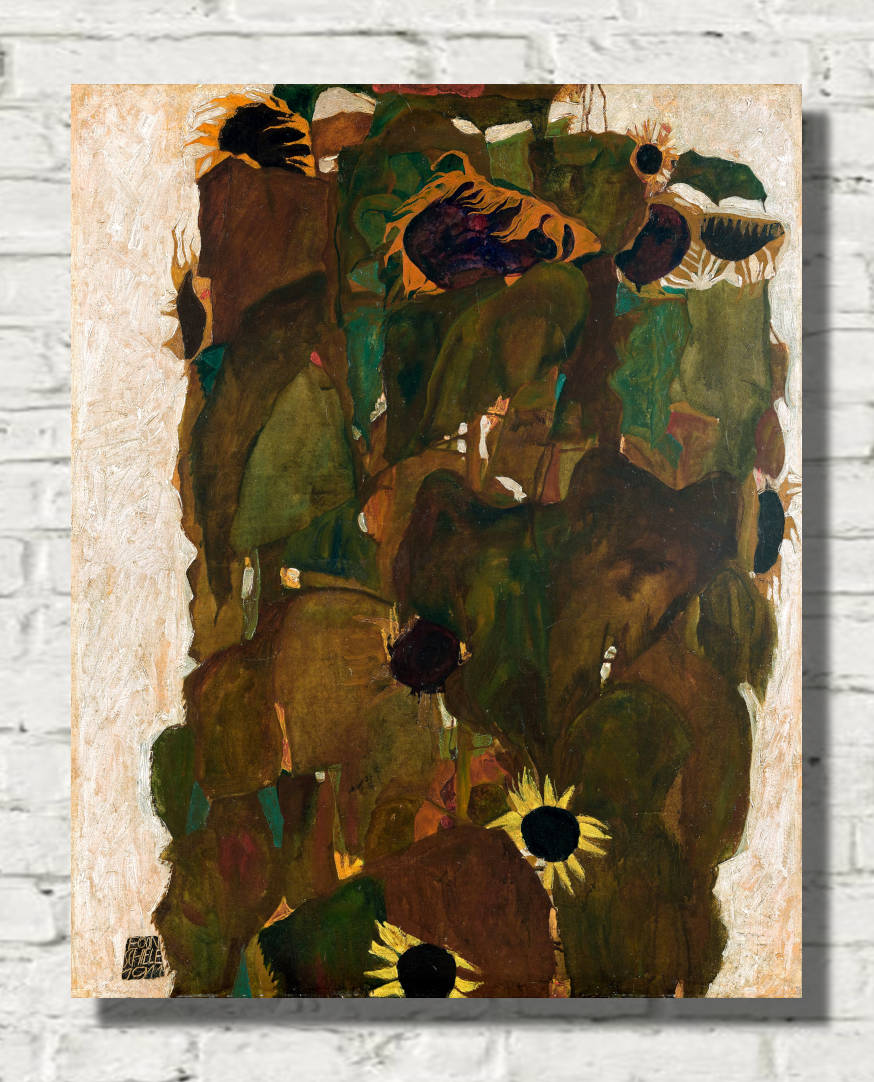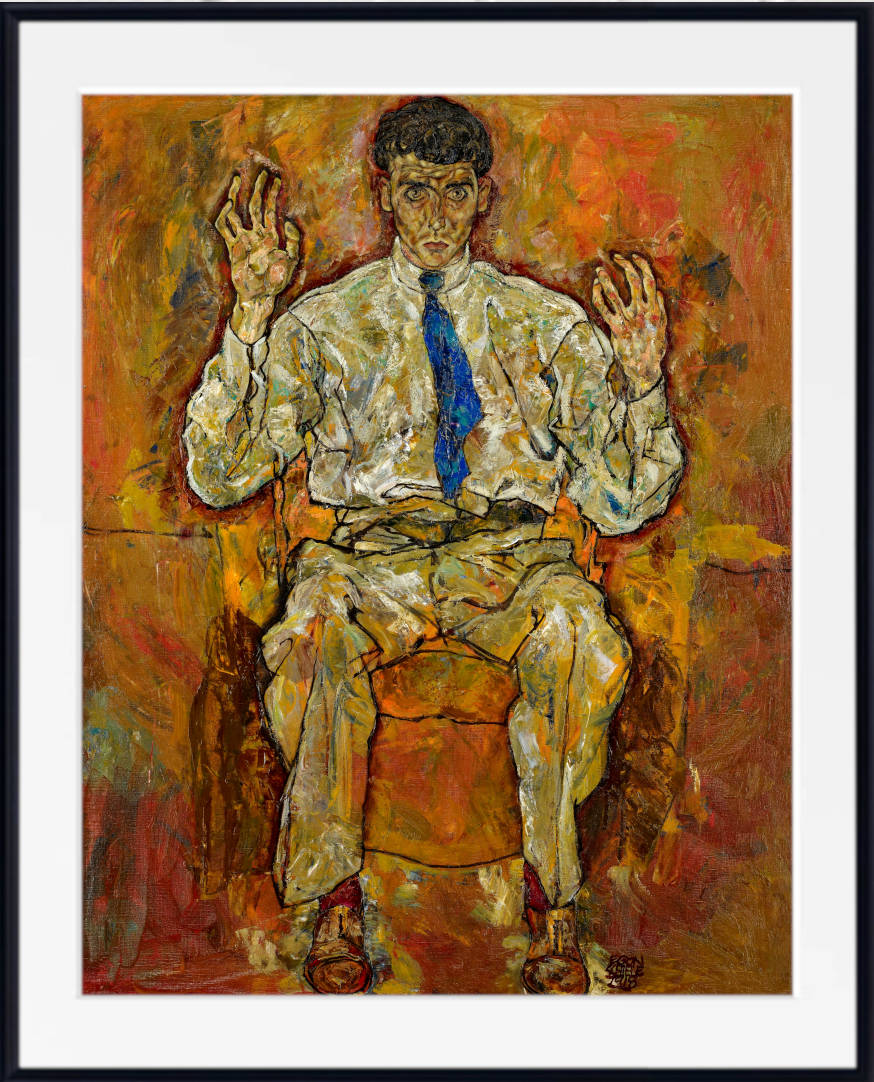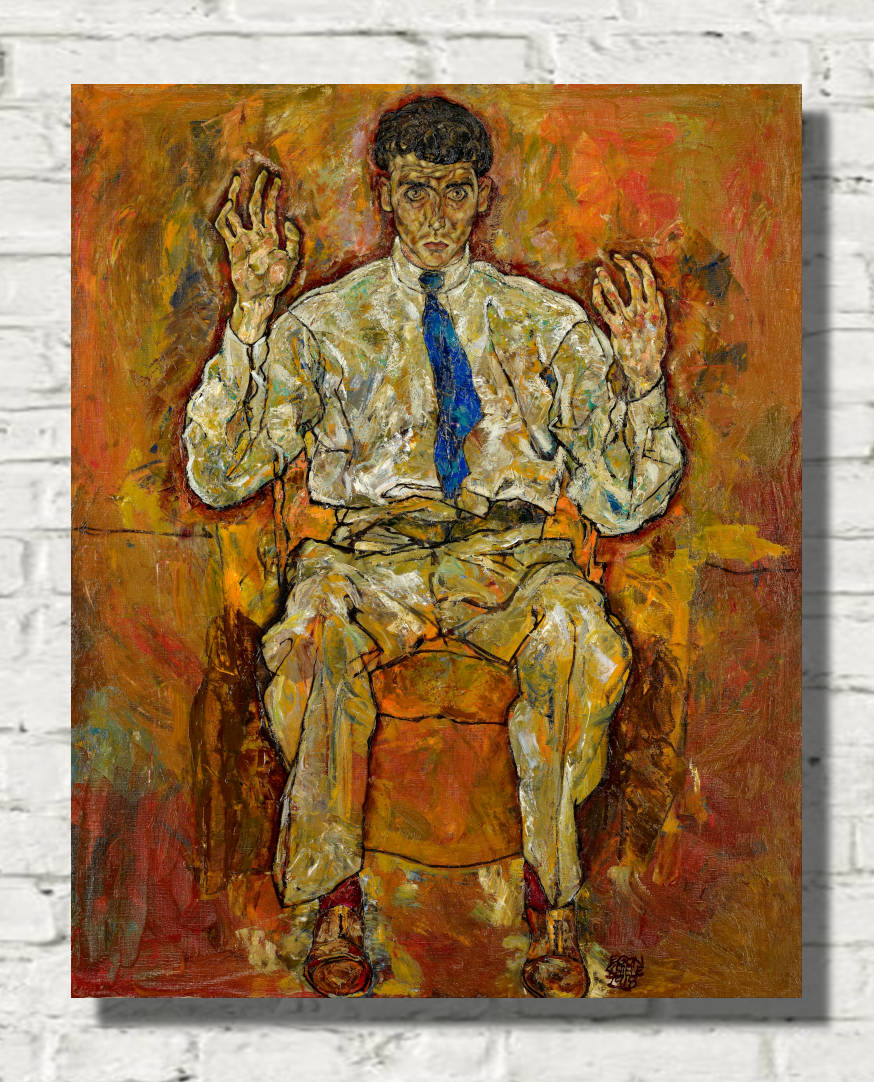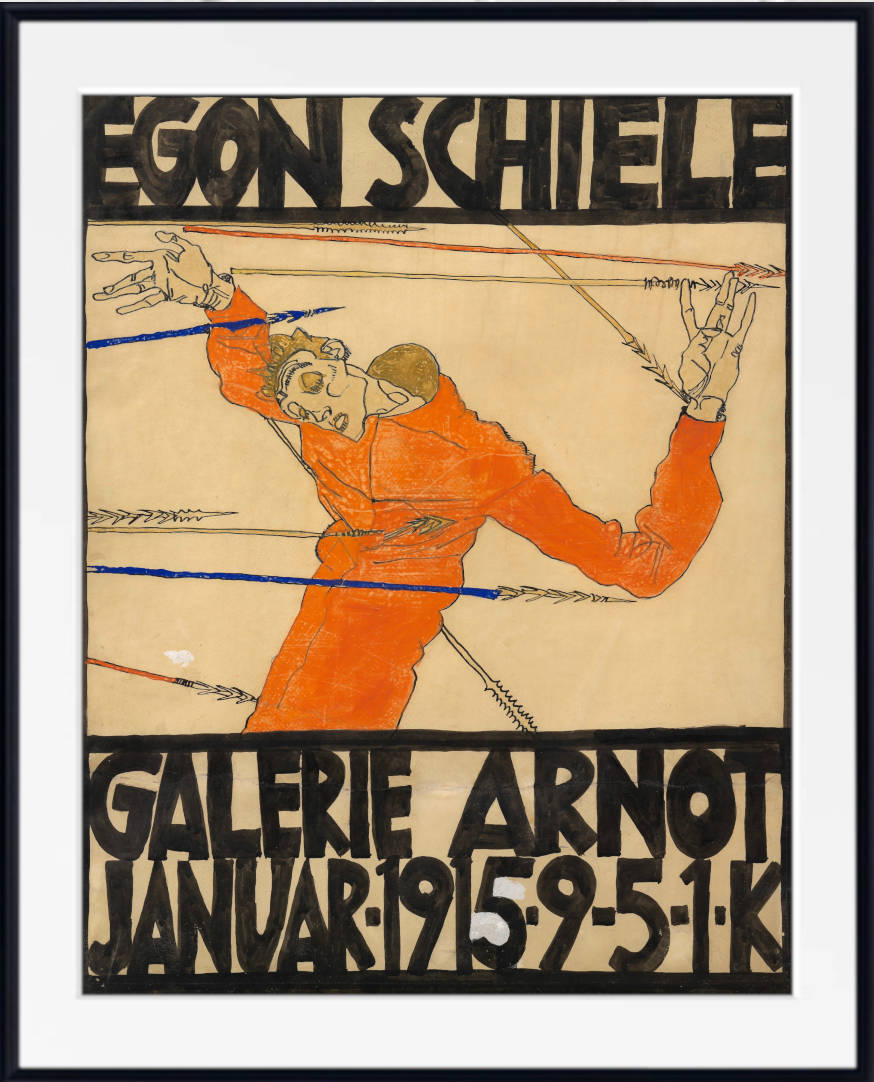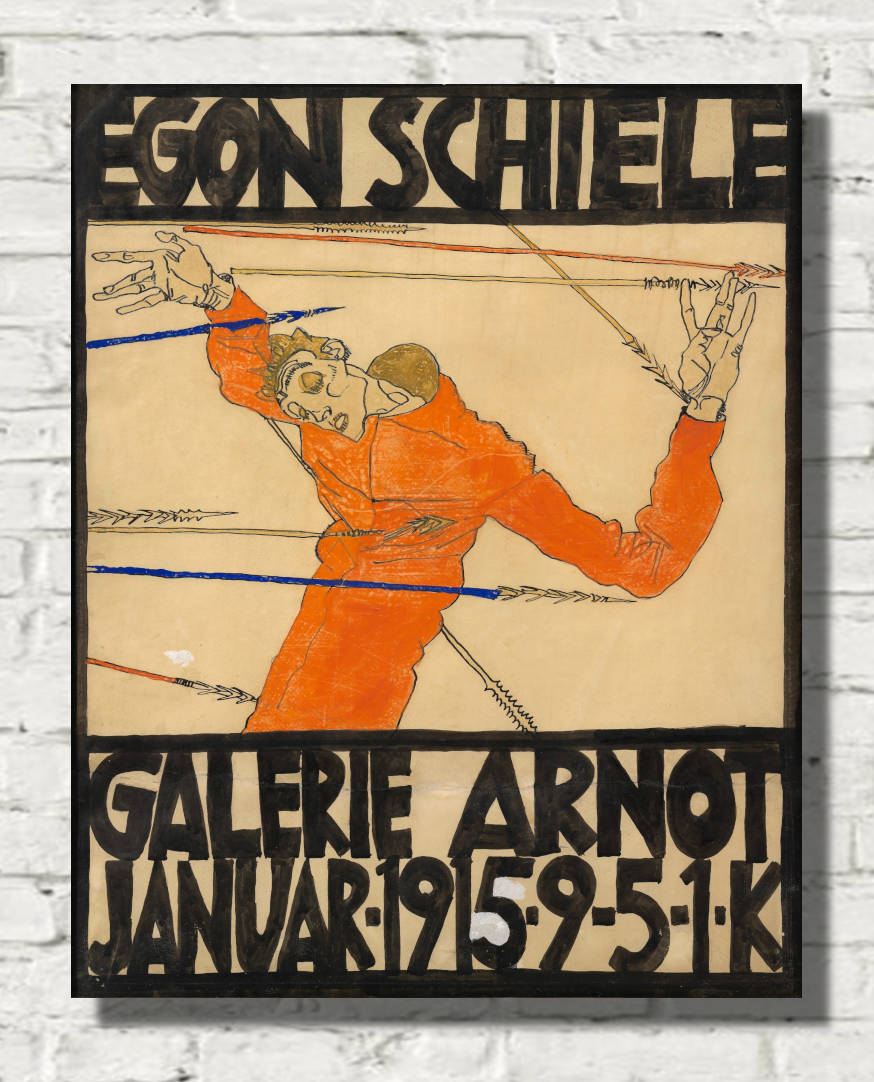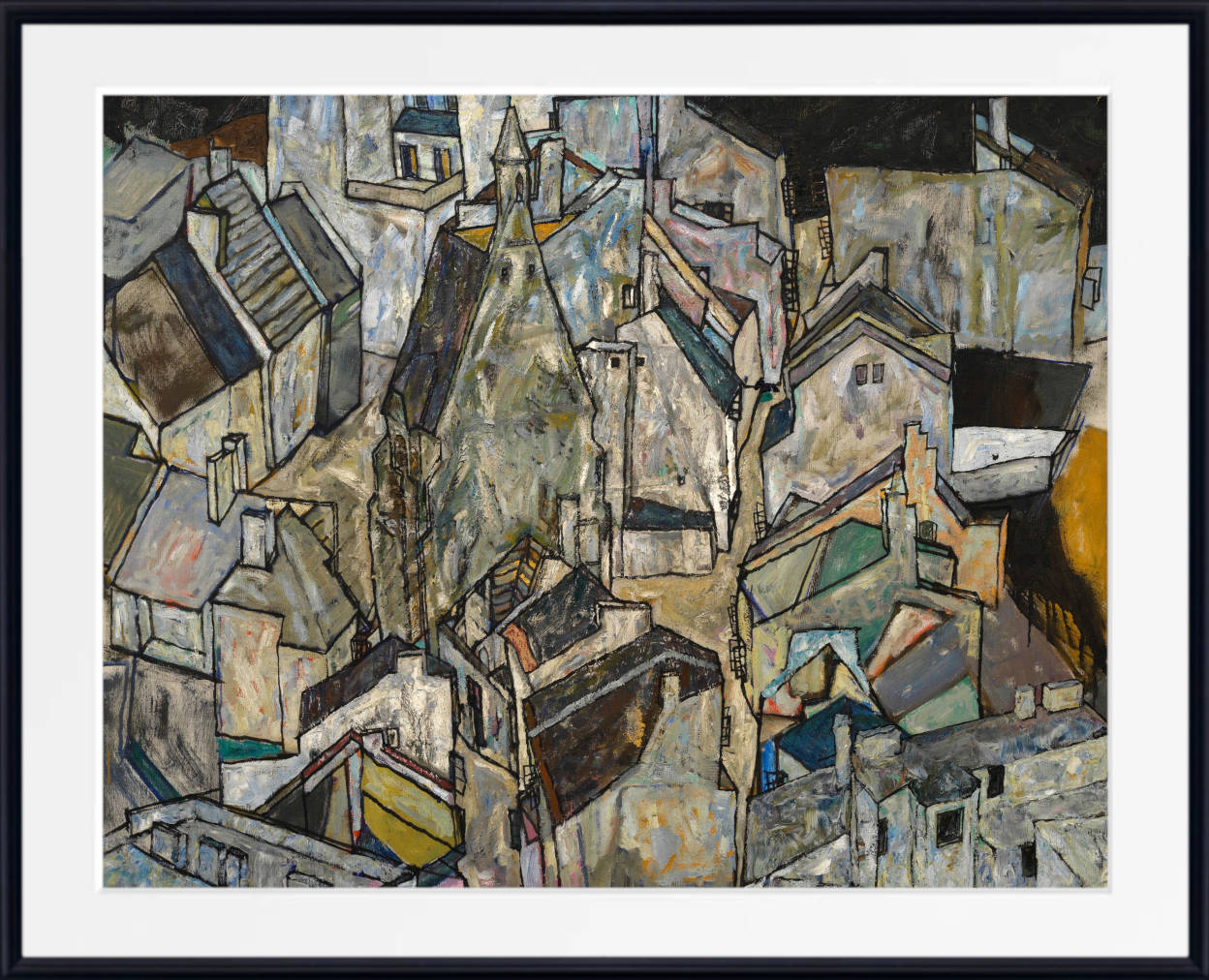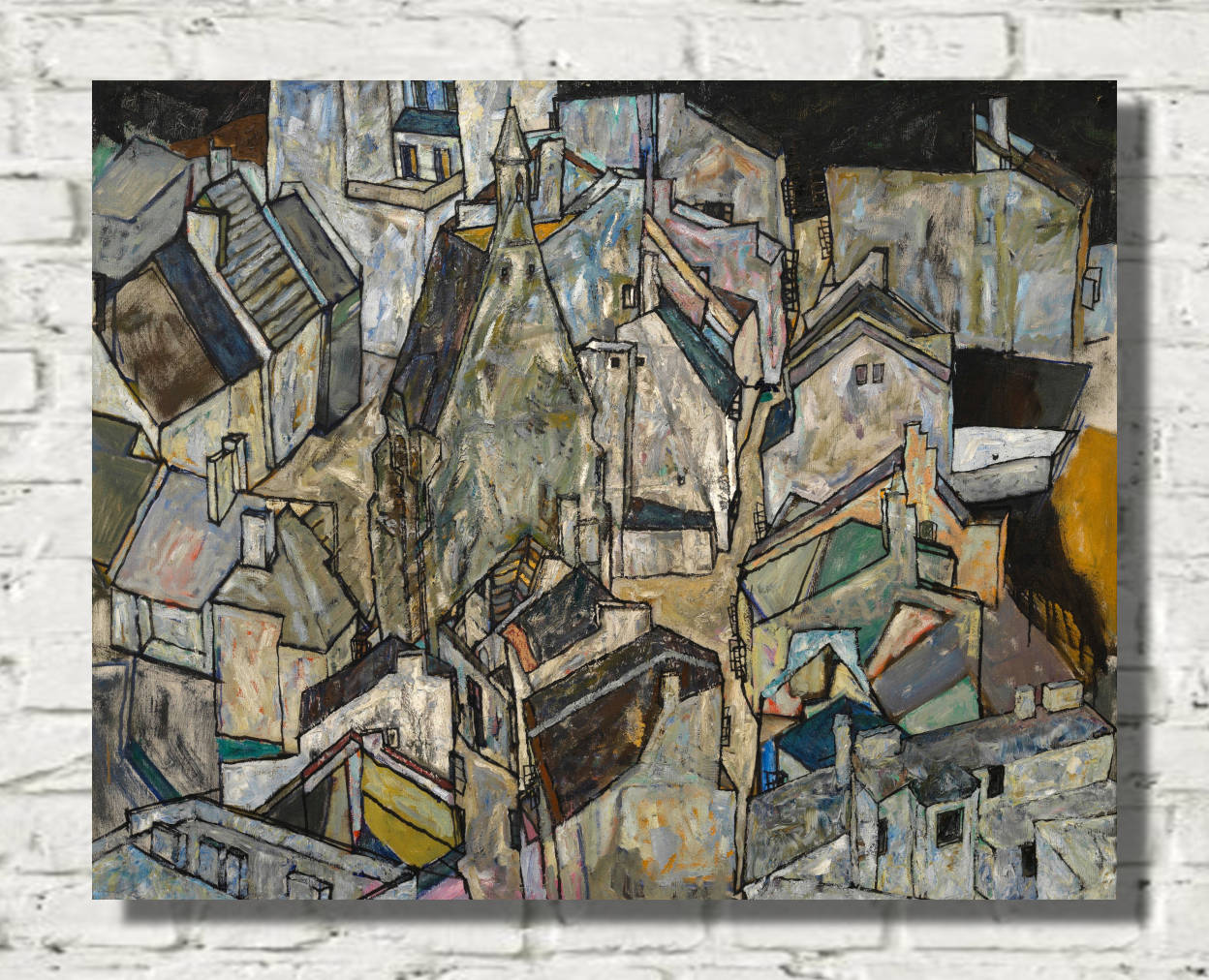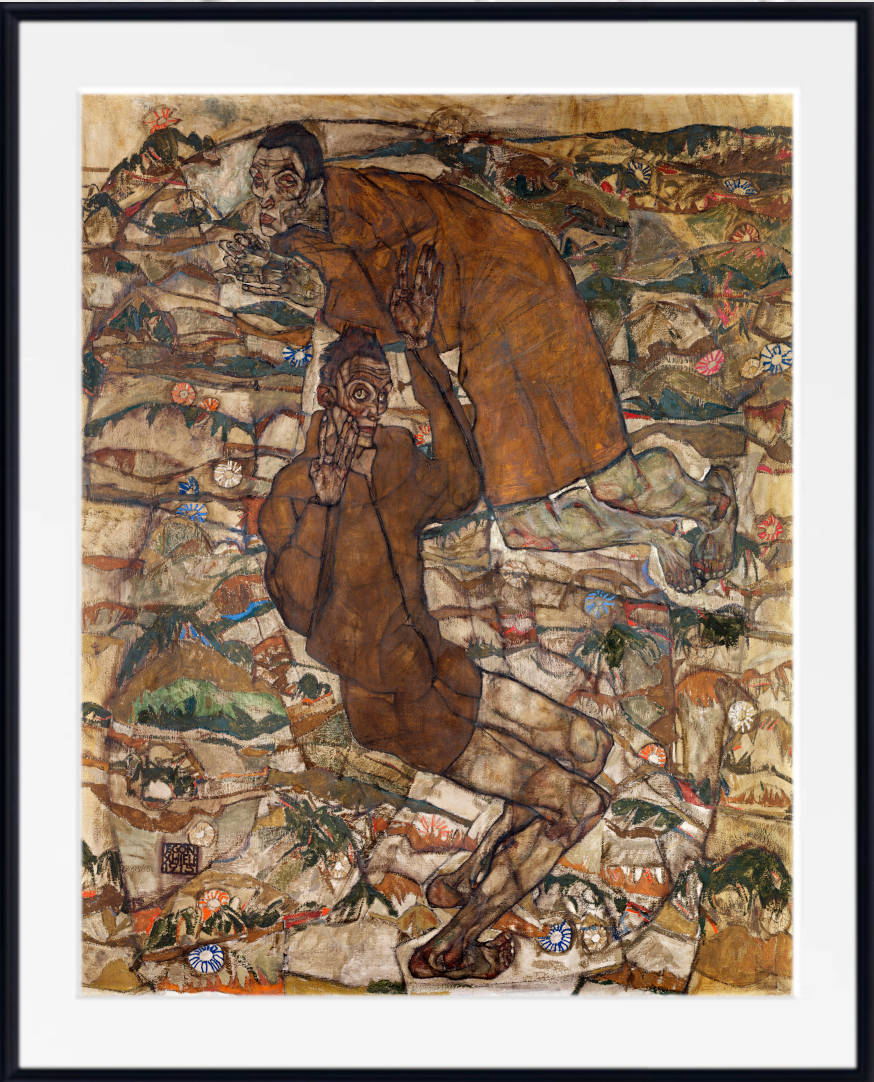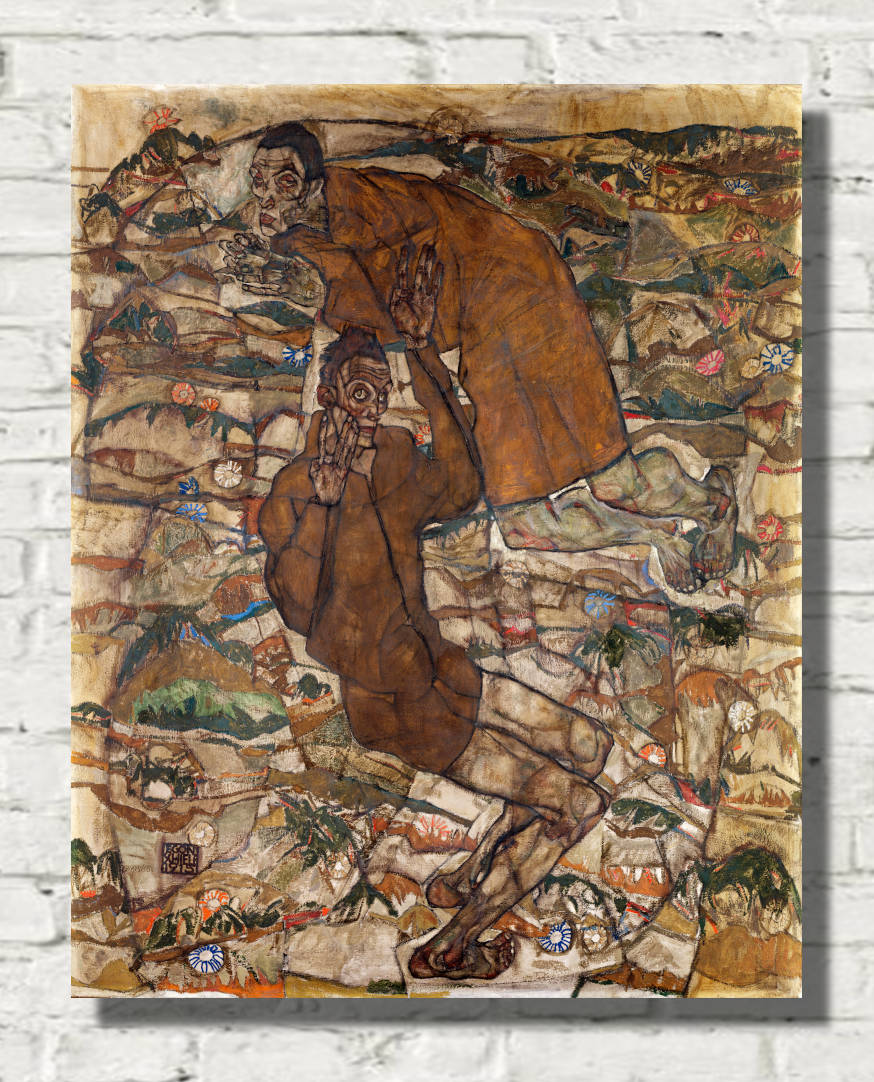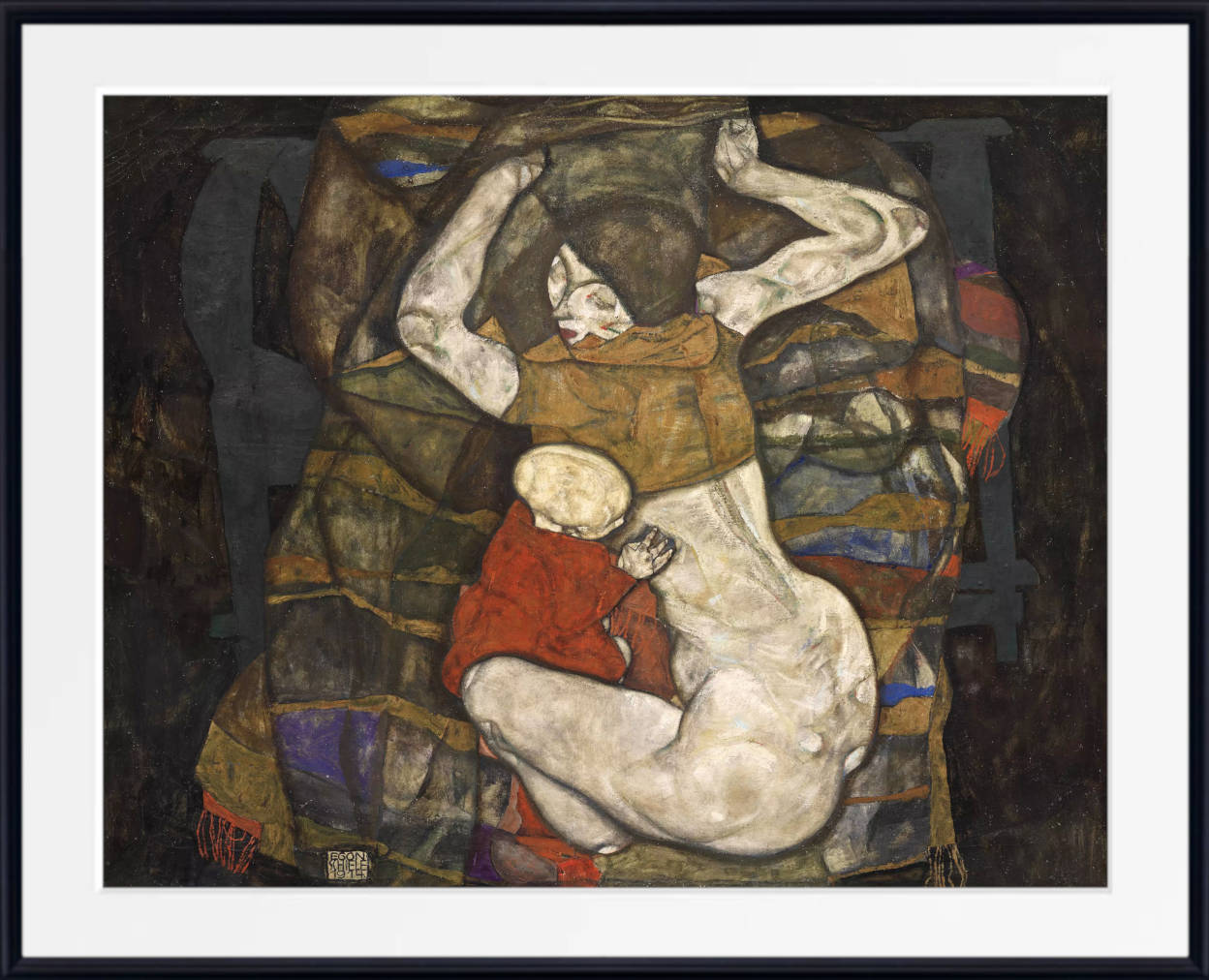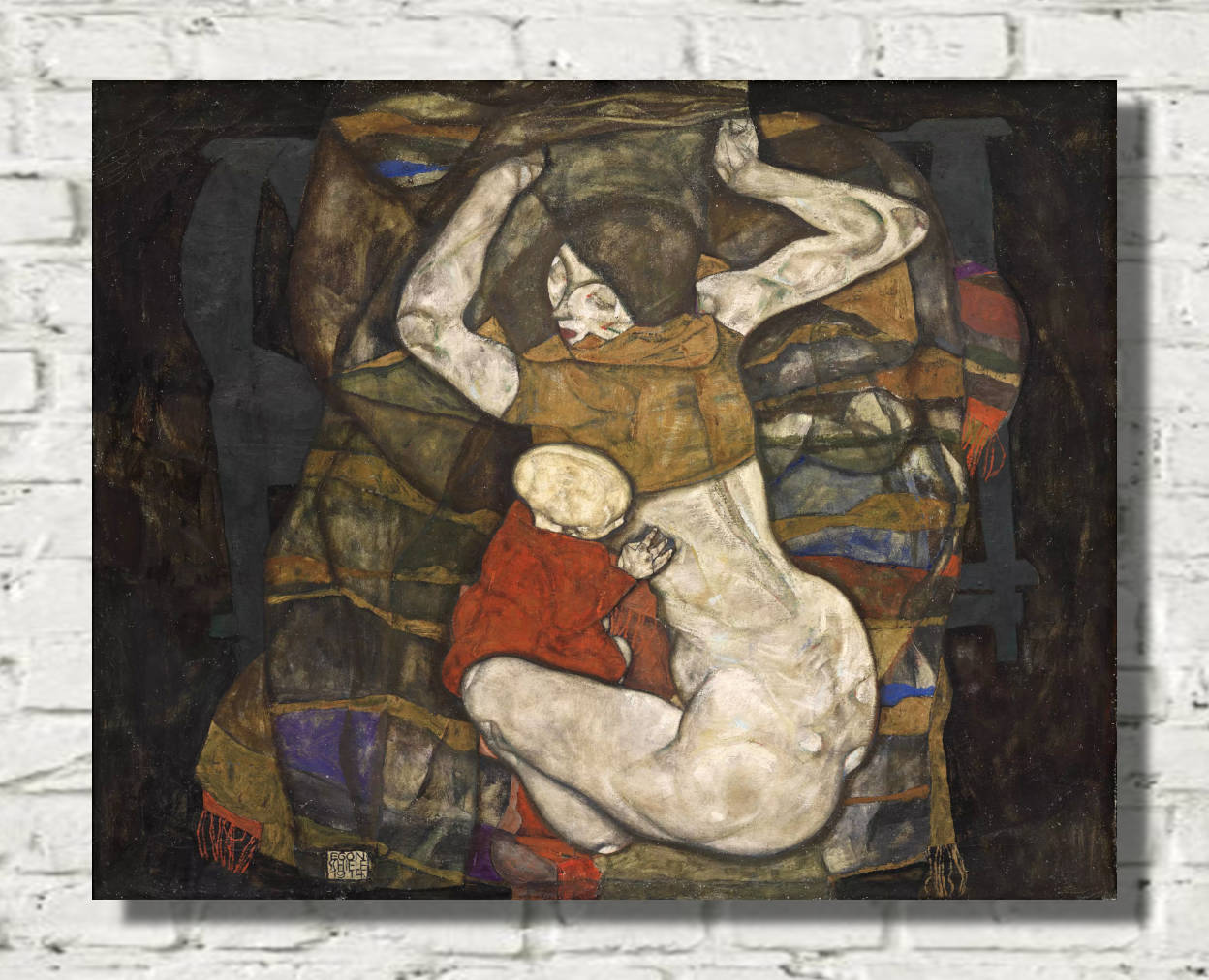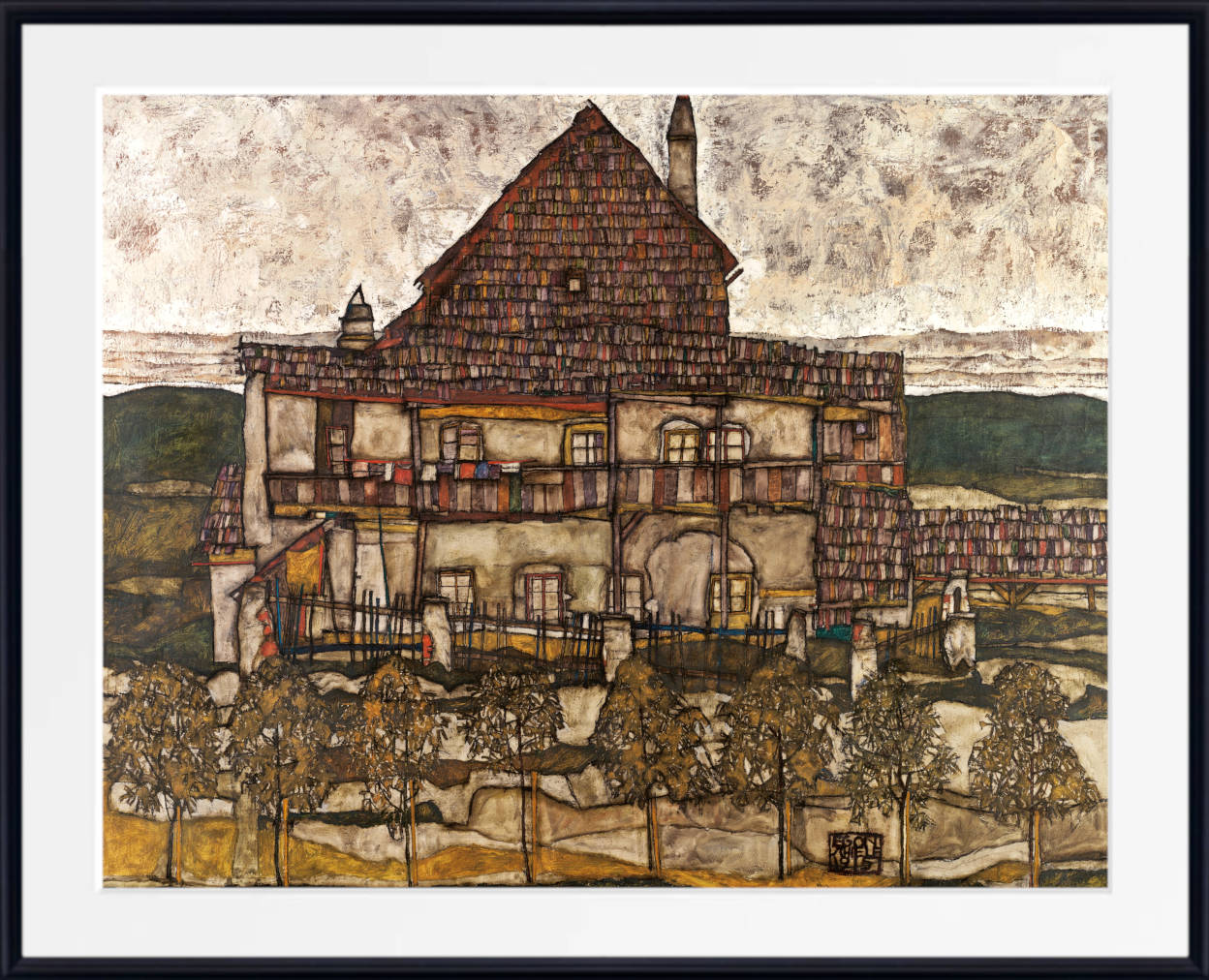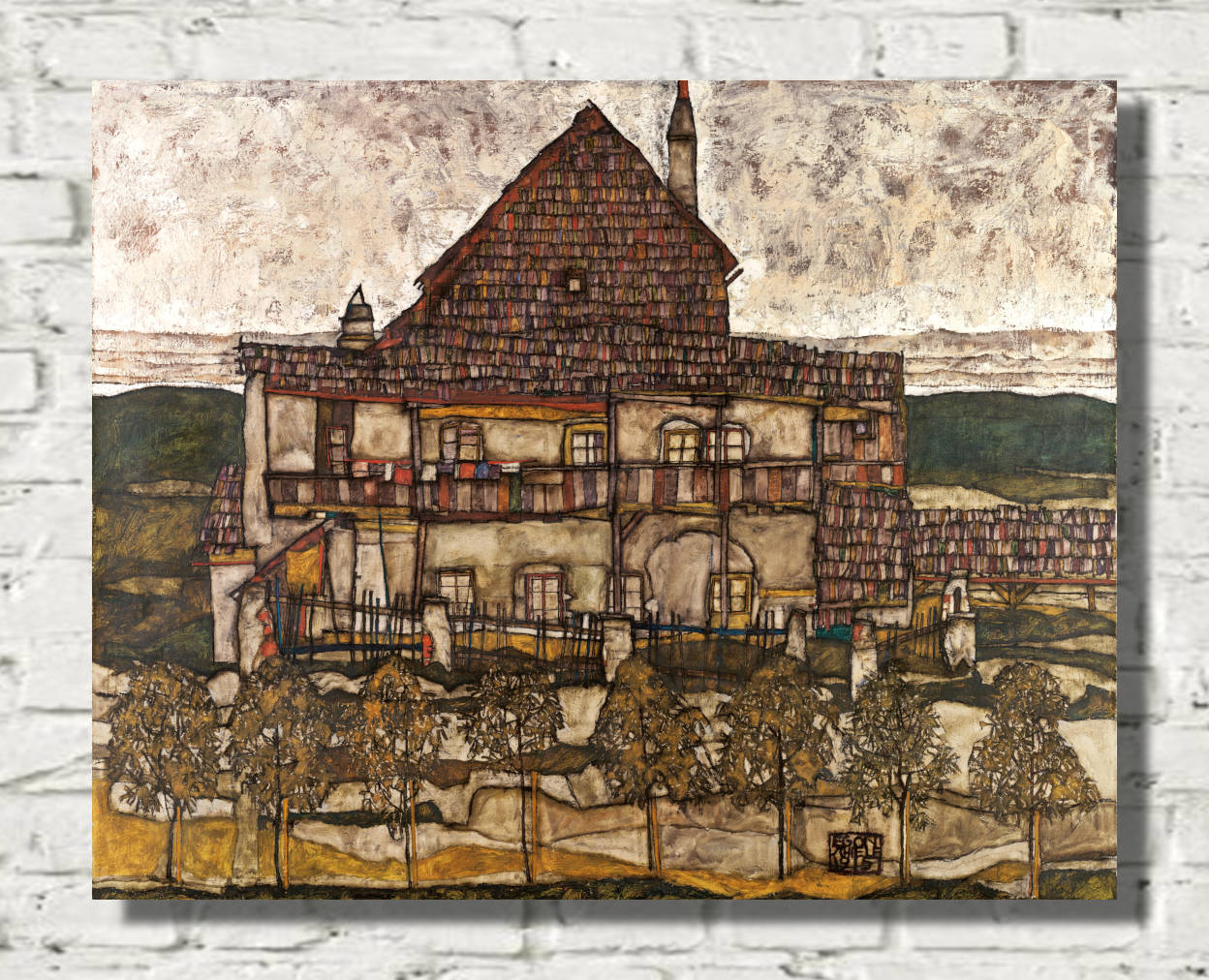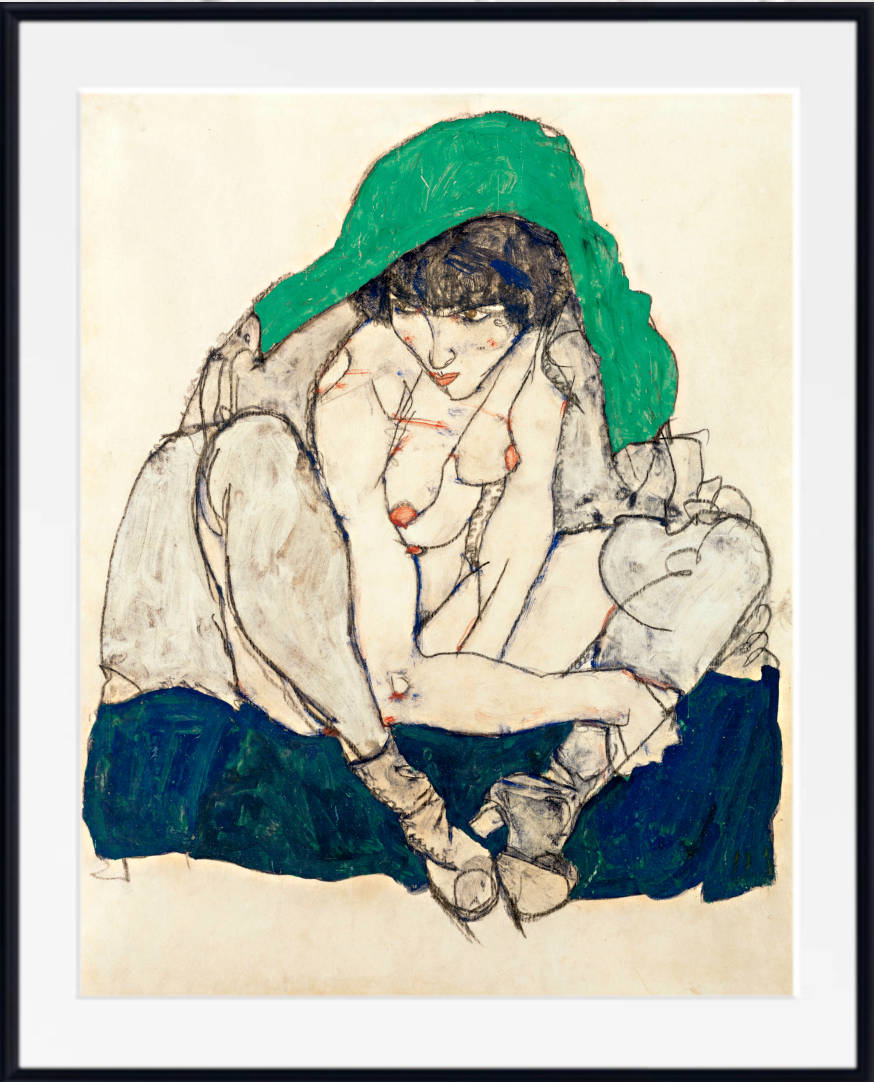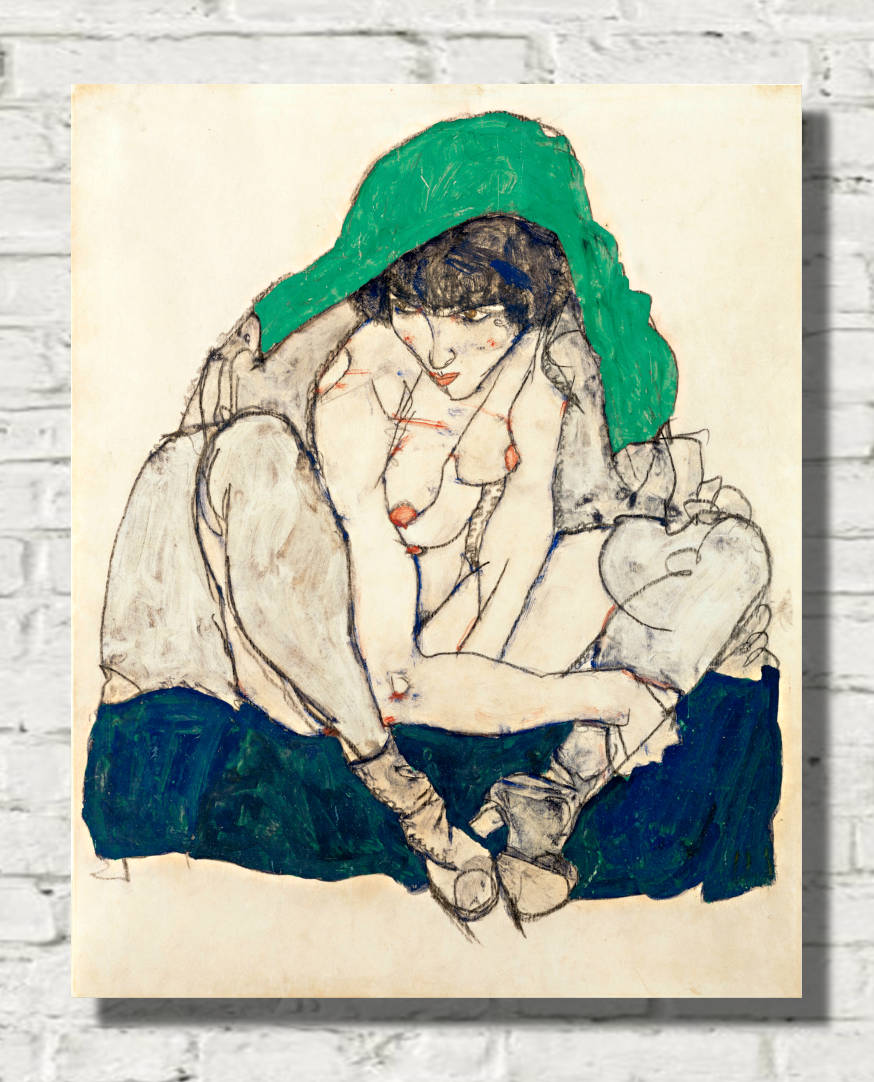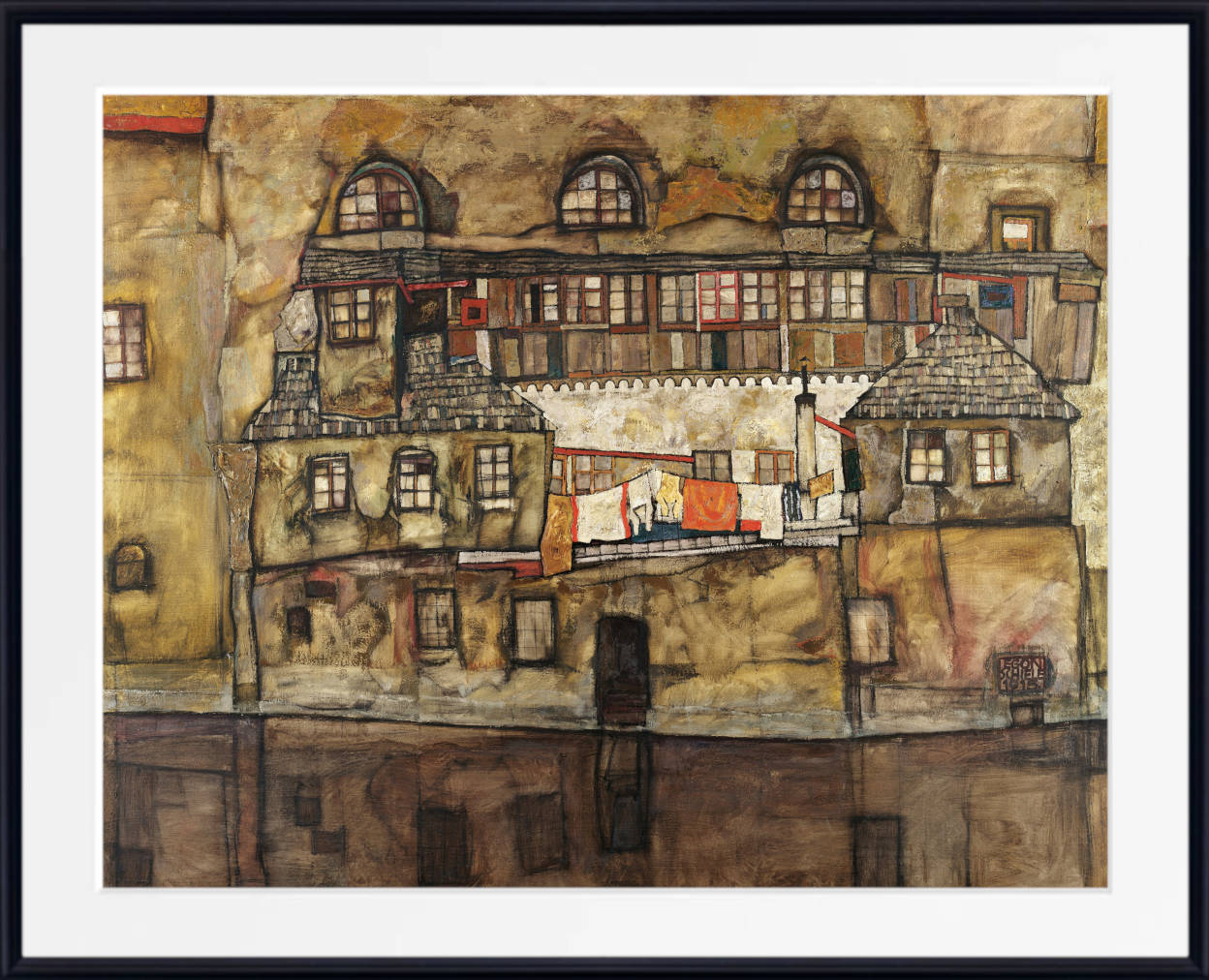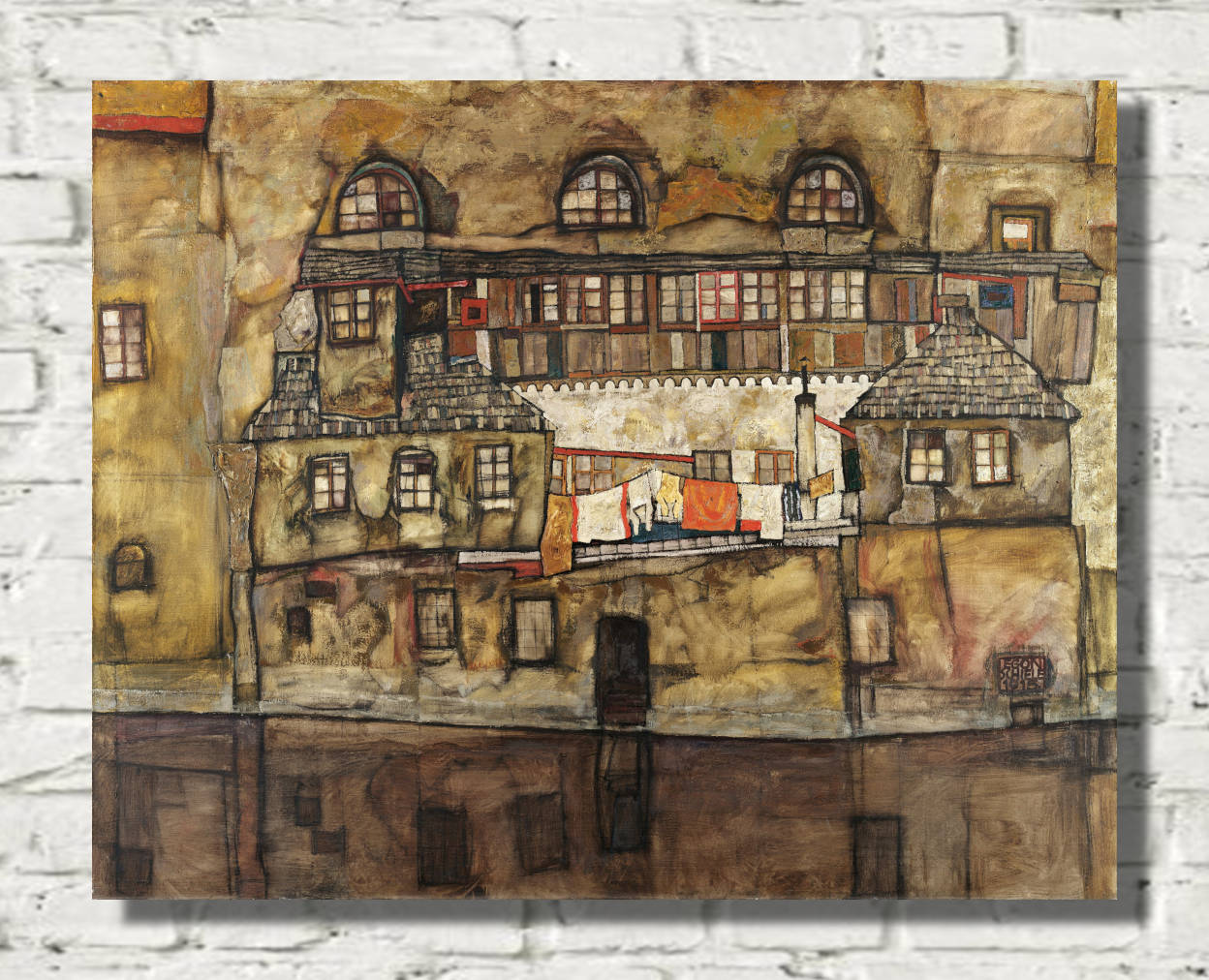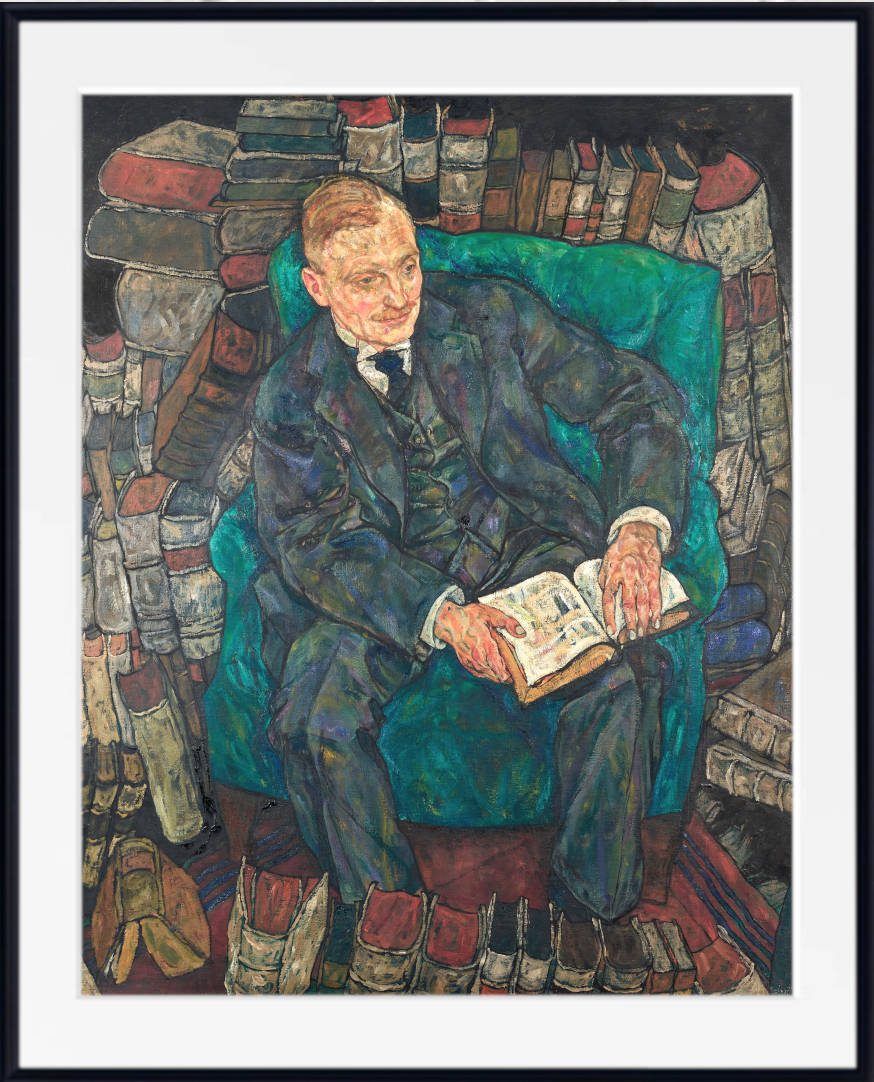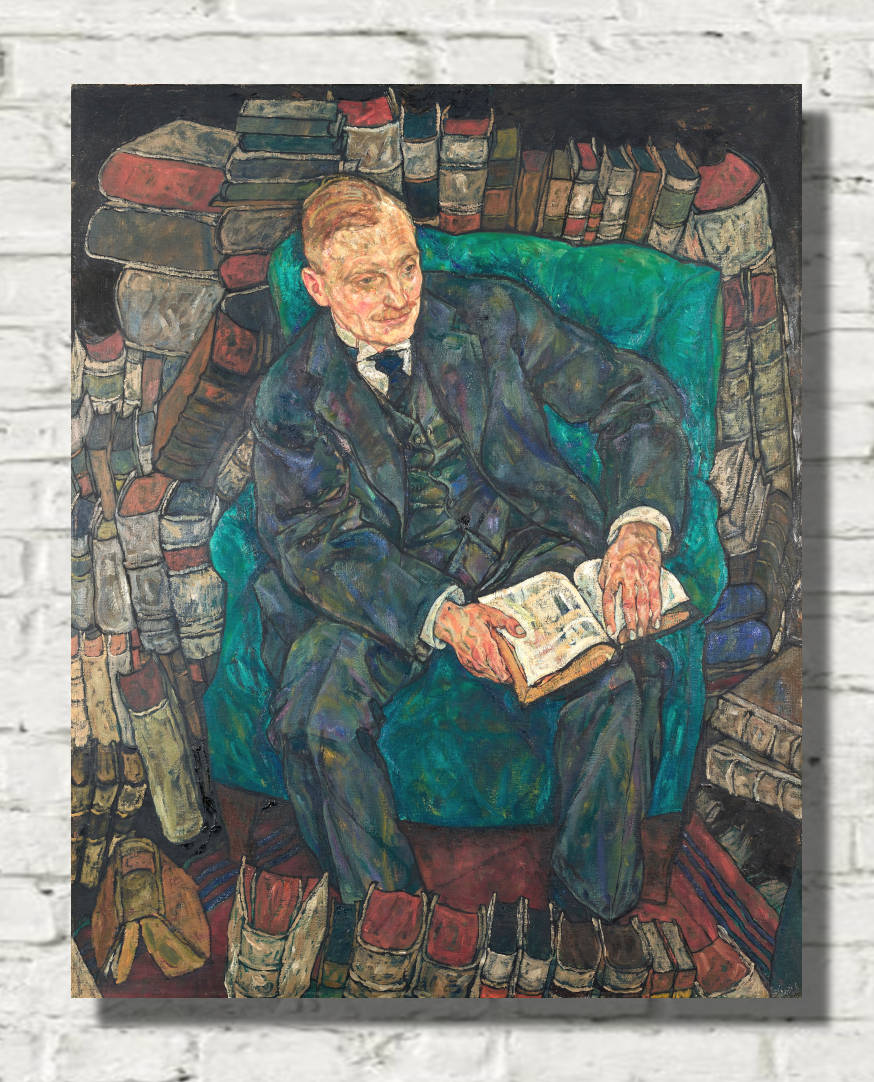Death and the Maiden, Egon Schiele
Egon Leo Adolf Ludwig Schiele (12 June 1890 – 31 October 1918) was an Austrian Expressionist painter. His work is noted for its intensity and its raw sexuality, and for the many self-portraits the artist produced, including nude self-portraits. The twisted body shapes and the expressive line that characterize Schiele's paintings and drawings mark the artist as an early exponent of Expressionism. Gustav Klimt, a figurative painter of the early 20th century, was a mentor to Schiele.
Egon Schiele - Early Life
Schiele was born in 1890 in Tulln, Lower Austria. His father, Adolf Schiele, the station master of the Tulln station in the Austrian State Railways, was born in 1851 in Vienna to Karl Ludwig Schiele, a German from Ballenstedt and Aloisia Schimak; Egon Schiele's mother Marie, née Soukup, was born in 1861 in Český Krumlov (Krumau) to Franz Soukup, a Czech father from Mirkovice, and Aloisia Poferl, a German Bohemian mother from Český Krumlov. As a child, Schiele was fascinated by trains, and would spend many hours drawing them, to the point where his father felt obliged to destroy his sketchbooks. When he was 11 years old, Schiele moved to the nearby city of Krems (and later to Klosterneuburg) to attend secondary school. To those around him, Schiele was regarded as a strange child. Shy and reserved, he did poorly at school except in athletics and drawing, and was usually in classes made up of younger pupils. He also displayed incestuous tendencies towards his younger sister Gertrude (who was known as Gerti), and his father, well aware of Egon's behaviour, was once forced to break down the door of a locked room that Egon and Gerti were in to see what they were doing (only to discover that they were developing a film). When he was sixteen he took the twelve-year-old Gerti by train to Trieste without permission and spent a night in a hotel room with her.
When Schiele was 14 years old, his father died from syphilis, and he became a ward of his maternal uncle, Leopold Czihaczek, also a railway official. Although he wanted Schiele to follow in his footsteps, and was distressed at his lack of interest in academia, he recognised Schiele's talent for drawing and unenthusiastically allowed him a tutor, the artist Ludwig Karl Strauch. In 1906 Schiele applied at the Kunstgewerbeschule (School of Arts and Crafts) in Vienna, where Gustav Klimt had once studied. Within his first year there, Schiele was sent, at the insistence of several faculty members, to the more traditional Akademie der Bildenden Künste in Vienna in 1906. His main teacher at the academy was Christian Griepenkerl, a painter whose strict doctrine and ultra-conservative style frustrated and dissatisfied Schiele and his fellow students so much that he left three years later.
Egon Schiele - Mentored by Gustav Klimt
In 1907, Schiele sought out Gustav Klimt, who generously mentored younger artists. Klimt took a particular interest in the young Schiele, buying his drawings, offering to exchange them for some of his own, arranging models for him and introducing him to potential patrons. He also introduced Schiele to the Wiener Werkstätte, the arts and crafts workshop connected with the Secession. Schiele's earliest works between 1907 and 1909 contain strong similarities with those of Klimt, as well as influences from Art Nouveau. In 1908 Schiele had his first exhibition, in Klosterneuburg. Schiele left the Academy in 1909, after completing his third year, and founded the Neukunstgruppe ("New Art Group") with other dissatisfied students. In his early years, Schiele was strongly influenced by Klimt and Kokoschka. Although imitations of their styles, particularly with the former, are noticeably visible in Schiele's first works, he soon evolved his own distinctive style.
Klimt invited Schiele to exhibit some of his work at the 1909 Vienna Kunstschau, where he encountered the work of Edvard Munch, Jan Toorop, and Vincent van Gogh among others. Once free of the constraints of the Academy's conventions, Schiele began to explore not only the human form, but also human sexuality. Schiele's work was already daring, but it went a bold step further with the inclusion of Klimt's decorative eroticism and with what some may like to call figurative distortions, that included elongations, deformities, and sexual openness. Schiele's self-portraits helped re-establish the energy of both genres[clarification needed] with their unique level of emotional and sexual honesty and use of figural distortion in place of conventional ideals of beauty. He also painted tributes to Van Gogh's Sunflowers as well as landscapes and still lifes. In 1910, Schiele began experimenting with nudes and within a year a definitive style featuring emaciated, sickly-coloured figures, often with strong sexual overtones. Schiele also began painting and drawing children. Schiele's self portrait, Kneeling Nude with Raised Hands (1910), is considered among the most significant nude art pieces made during the 20th century. Schiele's radical and developed approach towards the naked human form challenged both scholars and progressives alike. This unconventional piece and style went against strict academia and created a sexual uproar with its contorted lines and heavy display of figurative expression. At the time, many found the explicitness of his works disturbing.
From then on, Schiele participated in numerous group exhibitions, including those of the Neukunstgruppe in Prague in 1910 and Budapest in 1912; the Sonderbund, Cologne, in 1912; and several Secessionist shows in Munich, beginning in 1911. In 1911, Schiele met the seventeen-year-old Walburga (Wally) Neuzil, who lived with him in Vienna and served as a model for some of his most striking paintings. Very little is known of her, except that she had previously modelled for Gustav Klimt and might have been one of his mistresses. Schiele and Wally wanted to escape what they perceived as the claustrophobic Viennese milieu, and went to the small town of Český Krumlov (Krumau) in southern Bohemia. Krumau was the birthplace of Schiele's mother; today it is the site of a museum dedicated to Schiele. Despite Schiele's family connections in Krumau, he and his lover were driven out of the town by the residents, who strongly disapproved of their lifestyle, including his alleged employment of the town's teenage girls as models. Progressively, Schiele's work grew more complex and thematic, and he eventually would begin dealing with themes such as death and rebirth.
Self-Portrait, Grimacing, Egon Schiele
Egon Schiele in Neulengbach
Together the couple moved to Neulengbach, 35 km (22 mi) west of Vienna, seeking inspirational surroundings and an inexpensive studio in which to work. As it was in the capital, Schiele's studio became a gathering place for Neulengbach's delinquent children. Schiele's way of life aroused much animosity among the town's inhabitants, and in April 1912 he was arrested for seducing a young girl of 13, below the 14-year-old age of consent. When the police came to his studio to place Schiele under arrest, they seized more than a hundred drawings which they considered pornographic. Schiele was imprisoned while awaiting his trial. When his case was brought before a judge, the charges of seduction and abduction were dropped, but the artist was found guilty of exhibiting erotic drawings in a place accessible to children. In court, the judge burned one of the offending drawings ("depicting a very young girl dressed only above the waist") over a candle flame. The twenty-one days he had already spent in custody were taken into account, and he was sentenced to a further three days' imprisonment. While in prison, Schiele created a series of 12 paintings depicting the difficulties and discomfort of being locked in a jail cell.
Egon Schiele - World War I
In 1914, Schiele glimpsed the sisters Edith and Adéle Harms, who lived with their parents across the street from his studio in the Viennese district of Hietzing, 101 Hietzinger Hauptstraße. They were a middle-class family and Protestant by faith; their father was a master locksmith. In 1915, Schiele chose to marry the more socially acceptable Edith, but had apparently expected to maintain a relationship with Wally. However, when he explained the situation to Wally, she left him immediately and never saw him again. This abandonment led him to paint Death and the Maiden, where Wally's portrait is based on a previous pairing, but Schiele's is newly struck. (In February 1915, Schiele wrote a note to his friend Arthur Roessler stating: "I intend to get married, advantageously. Not to Wally.") Despite some opposition from the Harms family, Schiele and Edith were married on 17 June 1915, the anniversary of the wedding of Schiele's parents.
Although Schiele avoided conscription for almost a year, World War I now began to shape his life and work. Three days after his wedding, Schiele was ordered to report for active service in the army where he was initially stationed in Prague. Edith came with him and stayed in a hotel in the city, while Egon lived in an exhibition hall with his fellow conscripts. They were allowed by Schiele's commanding officer to see each other occasionally. During the war, Schiele's paintings became larger and more detailed. His military service, however, gave him limited time, and much of his output consisted of linear drawings of scenery and military officers. Around this time, Schiele also began experimenting with the themes of motherhood and family. His wife Edith was the model for most of his female figures, but during the war (due to circumstance) many of his sitters were male. Since 1915, Schiele's female nudes became fuller in figure, but many were deliberately illustrated with a lifeless doll-like appearance. Despite his military service, Schiele was still exhibiting in Berlin. He also had successful shows in Zürich, Prague, and Dresden. His first duties consisted of guarding and escorting Russian prisoners. Because of his weak heart and his excellent handwriting, Schiele was eventually given a job as a clerk in a POW camp near the town of Mühling. There, he was allowed to draw and paint imprisoned Russian officers; his commander, Karl Moser (who assumed that Schiele was a painter and decorator when he first met him), even gave him a disused store room to use as a studio. Since Schiele was in charge of the food stores in the camp, he and Edith could enjoy food beyond rations.
By 1917, he was back in Vienna and able to focus on his artistic career. His output was prolific, and his work reflected the maturity of an artist in full command of his talents. He was invited to participate in the Secession's 49th exhibition, held in Vienna in 1918. Schiele had fifty works accepted for this exhibition, and they were displayed in the main hall. He also designed a poster for the exhibition; it was reminiscent of the Last Supper, with a portrait of himself in the place of Christ. The show was a triumphant success. As a result, prices for Schiele's drawings increased and he received many portrait commissions. In the autumn of 1918, the Spanish flu pandemic reached Vienna. Edith, who was six months pregnant, died from the disease on 28 October. Schiele died only three days after his wife. He was 28 years old. During the three days between their deaths, Schiele drew a few sketches of Edith.

Female Portrait, Egon Schiele
Egon Schiele Painting Style
Some critics such as Jane Kallir have commented upon Schiele's work as being grotesque, erotic, pornographic, or disturbing, focusing on sex, death, and discovery. He focused on portraits of others as well as himself. In his later years, while he still worked often with nudes, they were done in a more realist fashion. From a young age, Schiele drew with 'manic fluency'. Art critic Martin Gayford wrote in The Spectator: 'He [Schiele] found his distinctive style very early. His entire oeuvre is that of a young man; most of the work in the first of the two rooms of this densely packed little exhibition dates from 1910–11, when Schiele (1890–1918) was just 20. That helps to explain some tendencies: a half-disgusted preoccupation with sexuality and a similarly queasy fascination with examining his naked self. The male figures mainly seem to have been modelled by the artist, though it is hard to be certain since the head is often not included.' Kallir and scholar Gerald Izenberg regard Schiele as fluid in sexuality and gender. Kallir says Schiele was "struggling with his own sexual feelings and gender norms" during a historical period of shifting gender expectations, the early women's movement, and criminalization of homosexuality. Some critics in the 21st century read his artwork as queer. A less known fact about Schiele's carreer is that, during his studies at the School of Arts and Crafts in Vienna, he explored sculpture and created a number of small-scale clay and plaster sculptures.
Egon Schiele - Legacy
Schiele was the subject of the 1980 biographical film Excess and Punishment (aka Egon Schiele – Exzess und Bestrafung), originating in Germany with a European cast that explores Schiele's artistic demons leading up to his early death. The film was directed by Herbert Vesely and stars Mathieu Carrière as Schiele, Jane Birkin as his early artistic muse Wally Neuzil, Christine Kaufman as his wife, Edith Harms, and Kristina Van Eyck as her sister, Adele Harms. Also in 1980, the Arts Council of Great Britain produced a documentary film, Schiele in Prison, which looked at the circumstances of Schiele's imprisonment and the veracity of his diary. In 2016 another biographical film was released, Egon Schiele: Death and the Maiden (German: Egon Schiele: Tod und Mädchen). Joanna Scott's 1990 novel Arrogance was based on Schiele's life and makes him the main figure. His life was also depicted in a theatrical dance production by Stephan Mazurek called Egon Schiele, presented in May 1995, for which Rachel's, an American post-rock group, composed a score titled Music for Egon Schiele. For The Featherstonehaughs contemporary dance company, Lea Anderson choreographed The Featherstonehaughs Draw On The Sketchbooks Of Egon Schiele in 1997. Schiele's life and work have also been the subject of essays, including a discussion of his works by fashion photographer Richard Avedon in an essay on portraiture entitled "Borrowed Dogs." Mario Vargas Llosa uses the work of Schiele as a conduit to seduce and morally exploit a main character in his 1997 novel The Notebooks of Don Rigoberto. Wes Anderson's film The Grand Budapest Hotel features a painting by Rich Pellegrino that is modeled after Schiele's style which, as part of a theft, replaces a so-called Flemish/Renaissance masterpiece, but is then destroyed by the angry owner when he discovers the deception. The cover of David Bowie's 1979 Lodger album is inspired by Schiele's self-portraits and an image of Schiele appears on the cover of the 2013 single The Stars (Are Out Tonight). Julia Jordan based her 1999 play Tatjana in Color, which was produced off-Broadway at The Culture Project during the fall of 2003, on a fictionalization of the relationship between Schiele and the 12-year-old Tatjana von Mossig, the Neulengbach girl whose morals he was ultimately convicted of corrupting for allowing her to see his paintings. The opening chapters of Guy Mankowski's 2017 novel An Honest Deceit were cited to be heavily influenced by Schiele's paintings; in particular his portrayals of his sister, Gertrude.
Egon Schiele - The Complete Works
- Nude Self-Portrait, Grimacing
- Голгофа (Шиле)
- Hafen von Triëst
- Sailing boat with reflections
- Häuser im Winter (Blick aus dem Atelier)
- Interieur
- Stylized Flowers in Front of Decorative Background
- Standing Girl, Back View
- Komposition mit zwei Gestalten
- Portrait of Gerti Schiele
- Nude Girl with Arms Outstretched
- Self-Portrait
- Seated Girl (Poldi Lodzinsky])
- Dead Mother I
- Seated Male Nude (Self-Portrait)
- Standing female nude with crossed arms
- Sitzender Mädchenakt mit Hemd über dem Kopf
- Sitzendes Mädchen mit Pferdeschwanz
- Self-Portrait with Eyelid Pulled Down
- Portrait of Eduard Kosmack
- Portrait of Herbert Rainer
- Zwei sich umarmende Frauen
- Landscape with Ravens
- Dead City III (City on the Blue River III)
- Self-Seer II (Death and Man)
- Small Tree in Late Autumn
- The Lyricist
- Pregnant woman and the death (Mother and Death)
- Black-haired Girl with raised Skirt
- Composition by Portrait of Three Men (Self-Portrait)
- Liegendes, halbbekleidetes Mädchen
- Selbstbildnis als Halbakt in schwarzer Jacke
- Still Life with Flowers
- Dead City
- Woman in a Black Pinafore
- Dead City III
- Self-Portrait
- Sonnenblumen I
- Stadt am blauen Fluß II
- Sitting boy (Sitzender Knabe)
- Sitting girl (Sitzendes Mädchen)
- Stehendes Mädchen
- Prophet, The
- Portrait of Wally
- Autumn Tree in Stirred Air (Winter Tree)
- Cardinal and Nun (Caress)
- Mourning Woman
- Self-Portrait with Lowered Head
- Self-Portrait with Physalis
- The Hermits
- Wally Neuzil in Black Stockings
- Self-Portrait with Bare Shoulder
- I Will Gladly Endure for Art and My Loved Ones
- Crouching Nude in Shoes and Black Stockings, Back View
- Agony (The Death Struggle)
- Die kleine Stadt I
- Setting Sun
- Liebespaar
- Liebespaar
- Rückenansicht eines Mädchens im blauen Rock
- Two Women Embracing
- Houses on the River (The Old Town)
- Lesbisches Liebespaar
- Kniender Frauenakt mit vorgestreckten Armen
- Woman with black Hair
- Stehender weiblicher Akt mit Strümpfen
- Self-Portrait in Yellow Vest
- Street Cart
- Standing Nude with Orange Drapery
- House wall (window wall)
- Mother with two children III
- Weibliches Liebespaar
- Zwei Freundinnen
- Crescent of Houses (The small City V)
- Crescent of Houses II (Island Town)
- House Wall on the River
- Levitation (The Blind II)
- House with shingle roof
- Portrait of Edith Schiele with striped dress
- Kniende mit hinunter gebeugtem Kopf
- Death and the Maiden
- Female Lovers
- Seated Couple
- Portrait of Edith (the artist's wife)
- Krumau - Crescent of Houses (The Small City V) (Krumau Hauserbogen (die Kleine Stadt V))
- Portrait of Johann Harms
- The embrace (Lovers II)
- Reclining Woman
- Seated Woman with Bent Knees
- Kniendes Mädchen
- Weiblicher Akt mit gelbem Handtuch
- Weiblicher Akt (1917)
- Weiblicher Rückenakt
- Mann und Frau (Umarmung)
- Reclining female nude
- Crouching Female Nude
- Seated Woman, Back View
- Dr. Franz Martin Haberditzl
- Four trees
- Still life with crockery
- Portrait of Paris von Gütersloh
- Bildnis der Frau des Künstlers, Edith Schiele
- Victor Ritter von Bauer
- The Family
- Dr. Hugo Koller
- Lovers (Self-portrait with Wally)
- Female Nude

Seated Woman in violet Stockings, Egon Schiele












